2024 Canyon Aeroad vs Trek Madone
The Canyon Aeroad and Trek Madone are popular road bike models. Our expert, Bernard Lu compares these models, their features, technologies and pricing.
This article compares the Canyon Aeroad and Trek Madone .
I’ll help you understand the bike model lineups, specifications, and suggested retail prices in USD. I’ll explain the carbon fiber technology ( Canyon Carbon Fiber and Trek OCLV ) and innovative frameset technologies on each bike.
The objective is to provide you with a clearer understanding of Canyon Aeroad and Trek Madone .

Canyon Aeroad
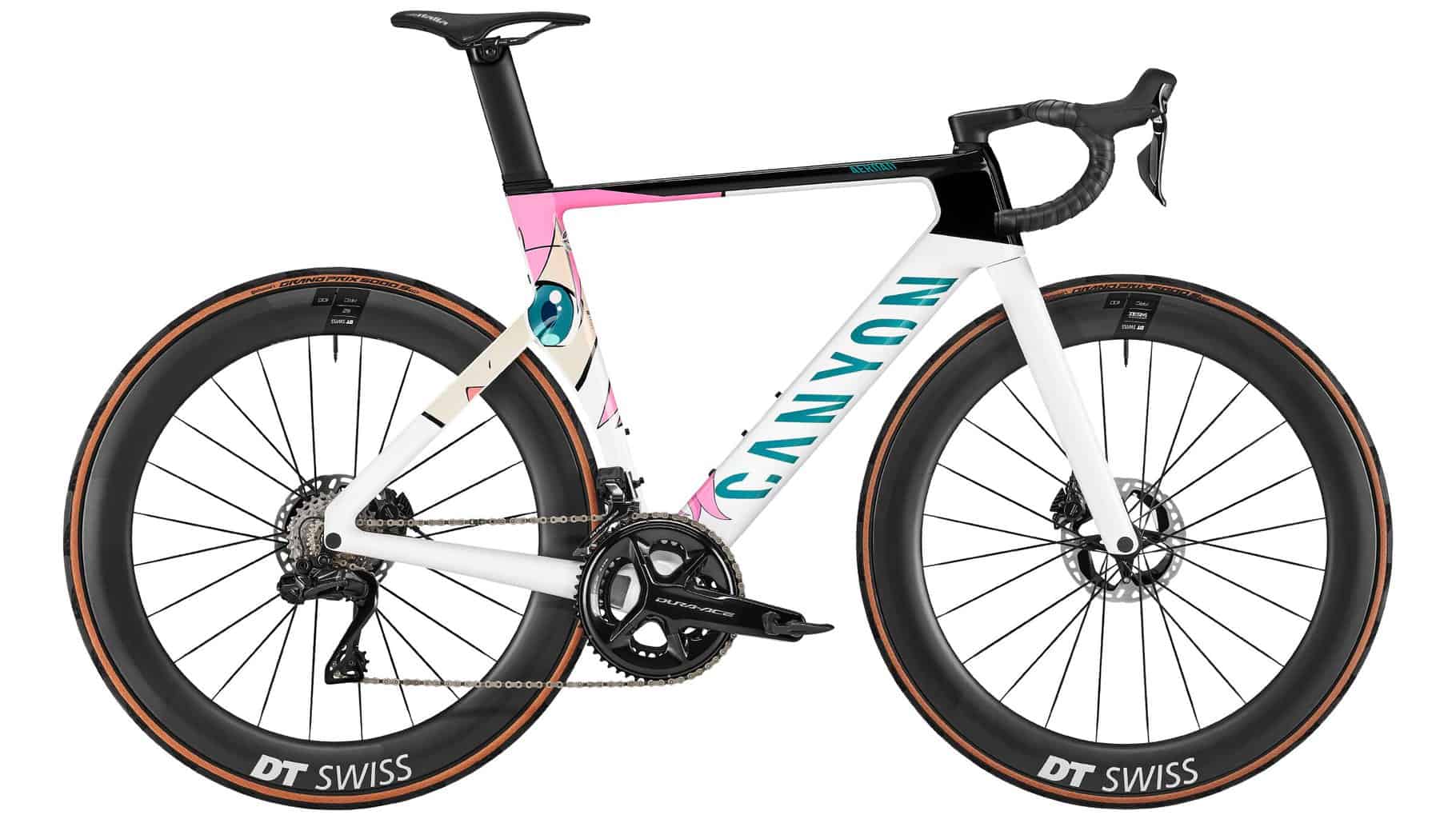
The Canyon Aeroad is an aero bike designed for pure speed. This is seen from the new cockpit design, which is very clean with hidden cables and steeped with innovative thinking.
The Aeroad is Canyon’s flagship bike, ridden by Matthew van der Poel to stage wins at the Tour de France .
Generally, a one-piece handlebar is very expensive to swap if you need a different dimension to achieve the right fit. Canyon overcomes this problem by having a handlebar that is both height and width adjustable from 390 to 430mm. They can also be folded and packed inside a bike bag for traveling. This new handlebar is used in the CFR and CF SLX models only.
The CFR model sits atop the Aeroad lineup with a weight of 7.3kg, followed by SLX (7.7kg) and SL (7.8kg).
Canyon Aeroad vs others
2024 BMC Timemachine Road vs Canyon Aeroad
2024 Cannondale System Six vs Canyon Aeroad
2024 Canyon Aeroad vs Giant Propel
2024 Canyon Aeroad vs Orbea Orca Aero
2024 Canyon Aeroad vs Scott Foil RC
Trek Madone
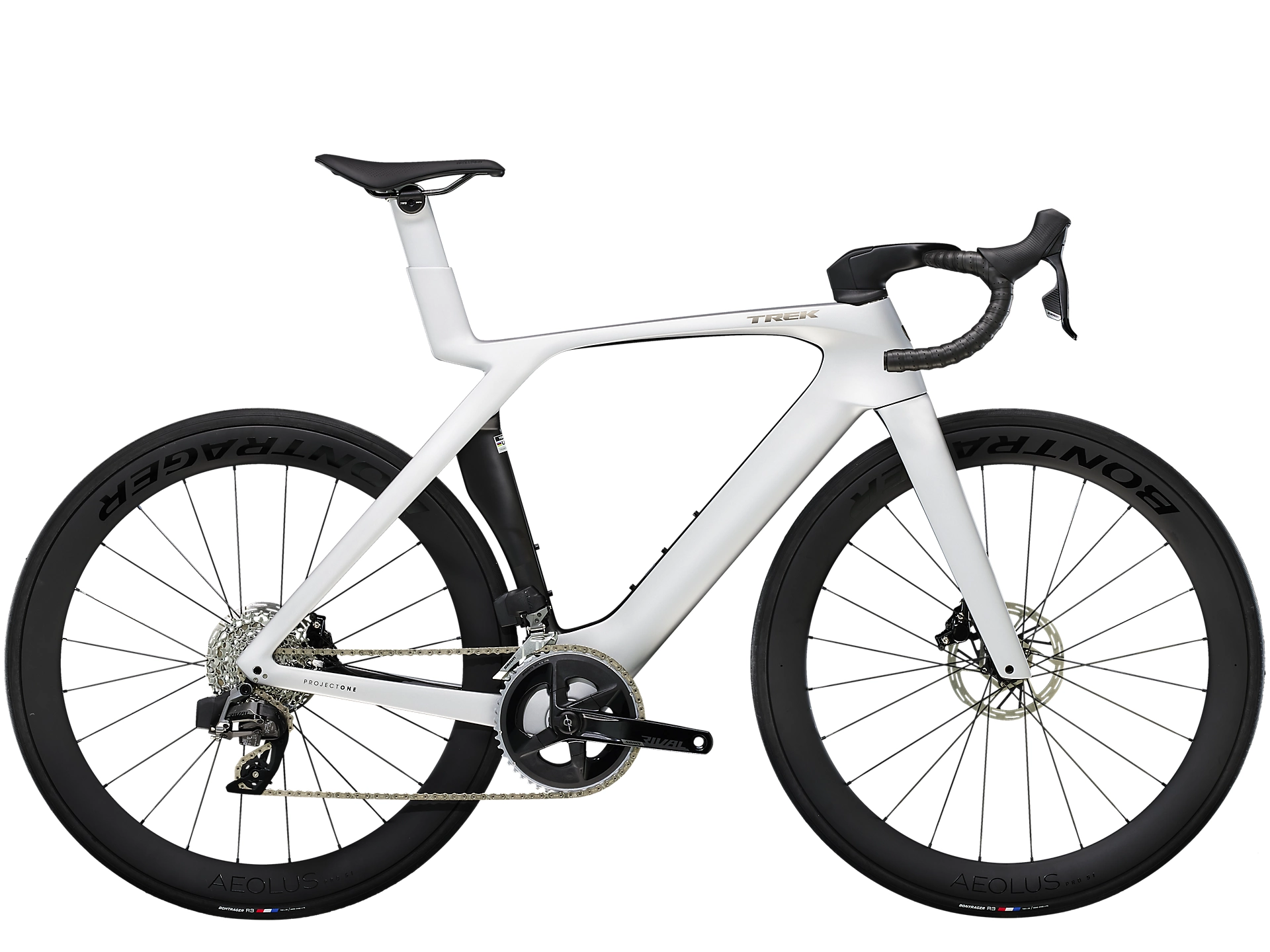
Dubbed the ultimate superbike, the Trek Madone is all about maximizing aerodynamics and speed .
Trek refreshed the Madone in June 2022, just before the Tour de France started. The new Trek Madone features a radical-looking seat tube with a big hole. The previous IsoSpeed system, which allows the seatpost to flex for extra comfort, is replaced by the IsoFlow Technology. According to Trek, the IsoFlow technology adds an aerodynamic advantage, reduces weight, and smooths the road ahead.
The range-topping Madone SLR is built on the Trek’s lightest OCLV 800 carbon, with a one-piece carbon handlebar. The Madone SL models are still based on the previous Madone frame design and use the OCLV 500 carbon.
The Madone SLR frameset is also available separately.
Trek Madone vs others
2024 BMC Timemachine Road vs Trek Madone
2024 Cervelo S5 vs Trek Madone
2024 Giant Propel Advanced vs Trek Madone
2024 Orbea Orca Aero vs Trek Madone
2024 Pinarello Dogma F vs Trek Madone
2024 Scott Foil RC vs Trek Madone
Canyon vs Trek carbon fiber
Canyon carbon fiber (cf).
Canyon’s innovative approach to bike design includes the utilization of advanced carbon fiber technology, resulting in performance-oriented bicycles that offer remarkable strength, reduced weight, and improved ride quality.
Canyon employs three main types of carbon fiber in their range of bikes; CFR , CF SLX, and CF SL , each offering unique benefits to cater to your needs and budgets.
- Canyon CFR (Canyon Factory Racing) Carbon is the top-tier carbon fiber used by Canyon, designed for maximum performance. Bikes built with CFR carbon are the lightest and stiffest in the Canyon line-up, favored by professional racers and serious enthusiasts alike. The CFR series represents the pinnacle of Canyon’s engineering prowess and innovation, employing state-of-the-art materials and advanced manufacturing techniques.
- Canyon CF SLX Carbon is a step below CFR, but it still offers exceptional performance characteristics. It used to be the highest-grade carbon in Canyon’s arsenal until the introduction of the CFR series. Bikes with CF SLX carbon frames provide a perfect balance of weight, stiffness, and comfort, making them highly versatile for a range of riding conditions.
- Canyon CF SL Carbon is the entry-level carbon fiber in Canyon’s range, but it still offers excellent performance. While it doesn’t quite match the extreme weight savings and stiffness of the CFR and CF SLX grades, CF SL frames are still impressively light and stiff, providing excellent performance for the value. Ideal for cyclists who desire a high-quality, performance-oriented bike without breaking the bank, the CF SL series is a testament to Canyon’s commitment to delivering value and performance.
Trek OCLV carbon
The OCLV (Optimum Compaction, Low Void) carbon is a proprietary carbon fiber manufacturing technology developed by Trek.
- Optimum Compaction refers to the heat and pressure applied during the curing process to squeeze out excess resin and ensure that the carbon layers are compacted to the optimal density.
- Low Void refers to the goal of reducing microscopic air pockets or voids that can occur in the carbon fiber and create weaknesses.
One of the key advantages of OCLV carbon is its ability to achieve an optimal balance between stiffness, strength, and weight. Trek engineers carefully tune the carbon layup and utilize varying modulus carbon fibers to create stiff frames in certain areas to maximize power transfer while maintaining compliance in other areas to enhance comfort and ride quality.
The OCLV carbon is available in 800 and 500 series.
- OCLV 800 is the highest-grade carbon fiber used by Trek. The carbon modulus is higher in OCLV 800, making it stiffer and lighter. The manufacturing process is more refined, using more advanced carbon and resins, leading to a bike frame that provides top performance levels for stiffness, weight, and strength. OCLV 800 is used in all models with SLR .
- OCLV 500 is a lower-grade carbon but still offers a high level of performance. It has a slightly lower carbon modulus, meaning it’s a bit less stiff and heavier than OCLV 800. OCLV 800 is used in all models with SL .
It’s worth noting that the different OCLV grades don’t only refer to the material itself, but also to the manufacturing techniques used to form the carbon fiber into bike frames. Higher-grade carbon requires more precise manufacturing techniques to take full advantage of its superior material properties.
Frameset technologies and innovations
Canyon Aeroad and Trek Madone framesets incorporate advanced technologies to enhance their bikes’ performance and ride characteristics.
Here’s an overview of the technologies used in each bike model.
Canyon Aeroad CFR
Where to buy
Canyon shops.
- Canyon online shop . Available to ship to most countries worldwide.
- Trek online shops . Australia, Austria, Canada, Germany, Netherlands, United Kingdom, United States
- Trek retailers . Use this tool to find your nearest Trek retailers.

Bernard Lu has 7+ years of experience working in a bicycle shop, overseeing the retail and workshop operations. He’s a qualified bicycle mechanic who understands a cyclist’s needs and speaks the same cycling lingo.
If you meet him at the cafe, he will happily talk to you for hours about all the intricacies of bikes and cycling tech. Just buy him a coffee next time you see him.
Mr. Mamil's content is for educational and entertainment purposes only. The content is not a substitute for official or professional advice. Please do your own due diligence.
Mr. Mamil participates in the Amazon Services LLC Associates Program, an affiliate advertising program designed to provide a means for us to earn fees by linking to Amazon.com and affiliated sites. We also participate in various other affiliate programs, and at times we earn a commission through purchases made through links on this website.
Privacy Policy
Website Terms
© Mr. Mamil, 2023
- Vuelta a España stage 17 Live - The sprinters vs the breakaway in Santander
Best aero road bikes: The fastest bikes money can buy
The best aero road bikes will cut through the air and save you watts
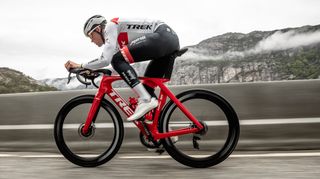
Best aero road bikes you can buy today
Aero road bikes explained.
The best aero road bikes will give you a dose of free speed with their aerodynamic performance better than ever and saving you energy at all but the lowest speeds. Their aerodynamic gains are more important than the benefits of riding the best lightweight bikes on all but the steepest climbs.
Modern aero road bikes are also much more comfortable than their predecessors and many have reduced the significant weight of those bikes close to the UCI's 6.8kg weight limit in top spec builds.
That makes an aero road bike a compelling choice if you're looking for the best road bike for your next purchase. Even though pro-level builds are very expensive, most brands will offer a range of builds to soften the price.
Read on for our pick of the best aero road bikes, or head to the bottom of the page where we answer some of the most common aero bike questions.
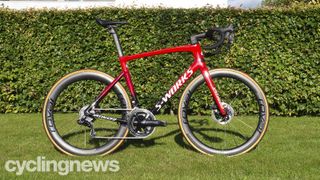
Specialized Tarmac SL 7
Our expert review:
Specifications
Reasons to buy, reasons to avoid.
The Tarmac has traditionally taken on the role of a lightweight climber in Specialized's road bike range, but in the pursuit of performance gains there has been such a convergence in technology that the latest Tarmac SL 7 has assumed both the aero and the lightweight mantle, and is the bike ridden by Specialized's sponsored pro teams in almost all races, with the exception of Paris-Roubaix.
Specialized has managed to make the Tarmac SL 7 as aero as many out and out aero bikes while still skimming the UCI's 6.8kg weight limit, even in the commercially available S-Works spec.
There's fantastic handling although the ride is harsher than the previous SL 6 model. The top spec bike comes with Roval Rapide CLX wheels, although surprisingly still with inner tubes. It also carries a frightening price tag, although lower spec bikes are slightly more affordable.
There are two frame levels available. The S-Works models use the brand's FACT 12r carbon and will have a frame weight of 800 grams (size 56cm, painted). The lower-specced Pro, Expert and Comp models share the same silhouette but with FACT 10r carbon for a frame weight of 960g.
Model range
- Specialized S-Works Tarmac SL7 - Shimano Dura-Ace Di2
- Specialized S-Works Tarmac SL7 - SRAM Red AXS
- Specialized Tarmac SL7 Pro - SRAM Force AXS
- Specialized Tarmac SL7 Expert - Shimano Ultegra Di2
- Specialized Tarmac SL7 Comp - SRAM Rival AXS

Trek Madone SLR
The latest Trek Madone SLR Gen 7 bike takes a totally different tack to most aero bikes, with a seat tube that splits towards its top, leaving a large hole under the rider. Trek claims that this significantly improves airflow towards the rear of the bike, resulting in around a 10 watt energy saving over the previous Madone.
There's another 10 watts saving on offer from the redesigned bar/stem, which has a significant flare, resulting in a more aero position when riding on the tops.
Trek has also shaved around 300g from the bike's weight by removing its predecessor's adjustable IsoSpeed damping. It's been replaced by the non-adjustable IsoFlow design, which cantilevers the seat mast over that split seat tube.
The previous generation Madone was already an expensive bike and the upgrades haven't done anything to improve affordability, but the Gen 7 bike is a radical, distinctive take on the aero road bike. Trek continues to sell the older model alongside the new bike if you hanker after its more stocky looks.
Model range (Gen 7 Madone)
- Trek Madone SLR 9 AXS
- Trek Madone SLR 9
- Trek Madone SLR 7 AXS
- Trek Madone SLR 7
- Trek Madone SLR 6 AXS
- Trek Madone SLR 6
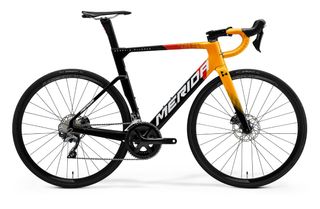
Merida Reacto
The Merida Reacto aero road bike has been updated to be more in line with modern trends - lighter, more aero, and more efficient. As such, the Reacto's slimmed down, aerofoil tubing and dropped seat stays make up the majority of the aero alterations.
To begin with its aero credentials, development of the Reacto IV saw six different models undergo computational airflow testing before heading into the real wind tunnel to refine and select the quickest frame.
The results include the fork being integrated into the frame, complete internal cable routing (into the cockpit rather than into the headtube), a redesign to optimise airflow at the seat stays and fork crown, and lower attachment points for the seat stays to reduce drag, among other touches.
Compliance and comfort are also the name of the game, with tweaks and improvements in the carbon layup – even more so in the higher-end CF5 frame – reducing the mass of the frame while bringing a reportedly smoother ride, which is something the Merida S-Flex seat post also assists with.
Further burnishing the Reacto IV's all-rounder tag are the 30mm tyre clearance, disc-brake cooling fins, an integrated rear light, and aero touches like the 'hidden' seat post clamp and thru-axles.
- Merida Reacto Team
- Merida Reacto 9000
- Merida Reacto 8000
- Merida Reacto 7000
- Merida Reacto Limited
- Merida Reacto 6000
- Merida Reacto 5000
- Merida Reacto 4000
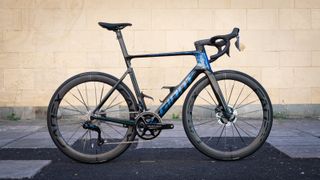
Giant Propel Advanced
The Giant Propel Advanced had an update in 2022, which has aimed to make the bike lighter and more accommodating, with a rear end that's skinnier and more compliant without compromising power delivery or front end stiffness.
The new two-piece bar and stem are designed to make it easier to work on the bike than its predecessor. Giant says that the new bike is some 225g lighter than the last model Propel, and also more aero, saving over 6 watts. There's an increase in tyre clearance too, allowing you to fit 30mm rubber for increased road smoothing.
The top spec Propel Advanced SL bikes have an integrated seat mast, which limits adjustability, but the Advanced and Advanced Pro have a more normal seatpost design, which should make resale easier.
- Giant Propel Advanced SL 0
- Giant Propel Advanced SL 1 (not US)
- Giant Propel Advanced SL Disc Di2 (not UK)
- Giant Propel Advanced Pro 0 AXS
- Giant Propel Advanced Pro 0 Di2
- Giant Propel Advanced Pro 1 (not US)
- Giant Propel Advanced 1
- Giant Propel Advanced2 (not US)

Pinarello Dogma F
This fourth iteration of the Dogma F has lost its numeric suffix, but follows the form of its predecessors; the winners of five Tours de France.
At a time when many brands were developing separate lightweight and aero bikes, Pinarello stuck to its guns with the Dogma series, progressively refining its all-rounder design with increased integration and improved aerodynamics.
The Dogma was never a lightweight bike though, leading Team Ineos Grenadiers and its predecessor, Team Sky, to stick to rim brakes long after other teams had switched to discs and look to save weight elsewhere by using Lightweight wheels for hilly stages.
But the Dogma F manages to reach a more competitive weight via small gains in parts like the 3D-printed titanium seatpost clamp, which together add up to a 265g reduction from the Dogma F12 and puts a top spec disc brake retail build at around 7kg. The Dogma F is not just light though, it's razor sharp, fast, and comfortable with it. It's also one of the few high spec bikes that's available with rim brakes, not just discs.
- Pinarello Dogma F Red eTap AXS
- Pinarello Dogma F Dura-Ace Di2
- Pinarello Dogma F Disc Super Record EPS
- Pinarello Dogma F Custom Build
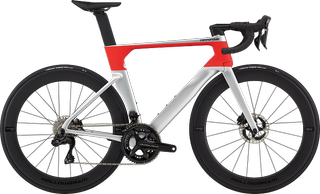
Cannondale SystemSix
The SystemSix moniker is nothing new to Cannondale, having first appeared in the form of a hybrid carbon fibre/aluminium composite frame back in 2007. Ahead of its time in many ways, it paved the way for future models such as the lightweight and dynamic SuperSix Evo , which has also been given the aero treatment and an upgrade in 2023.
The blueprint for the SystemSix - Cannondale's dedicated aero road bike - has been touted by the American company to be the 'fastest on the planet'. At 7.8kg it may seem a little on the portly side, but Cannondale says the added grams will do little to thwart progress, even on the hills.
The SystemSix makes an endearing case for itself as far as free speed is concerned. It's seriously fast - be it on a descent, flat, or climb, and the powerful disc brakes make for controlled modulation mid-corner.
Offering a choice of Shimano Dura-Ace Di2 , Ultegra Di2, Ultegra mechanical, and Red eTap AXS groupsets, there are plenty of options to choose from depending on your budget.
- Cannondale SystemSix Hi-MOD Dura-Ace Di2
- Cannondale SystemSix Hi-MOD Red eTap AXS
- Cannondale SystemSix Hi-MOD Ultegra Di2
- Cannondale SystemSix Carbon Ultegra
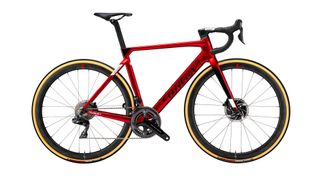
Wilier Filante SLR
The Wilier Filante SLR is designed to mix aerodynamics and low weight, with a design that reduces the amount of material used, resulting in a claimed 870g frame weight. The tube shapes are also said to make for better performance when riding in real world conditions like in a group or cornering, where airflow may be more complex than in a wind tunnel test.
Wilier has retained its signature widely spaced fork legs, which it says reduces aero interference with the turning wheel, as well as offering wider tyre options. The frame and fork are asymmetric to balance the loads on their component parts. Wilier fits its own SLR42KC wheels to many specs as well as offering a Vision Trimax alternative.
- Wilier Filante SLR Campagnolo Super Record EPS Disc
- Wilier Filante SLR Shimano Dura-Ace Di2
- Wilier Filante SLR Sram Red eTap AXS
- Wilier Filante SLR Shimano Ultegra Di2
- Wilier Filante SLR Sram Force eTap AXS
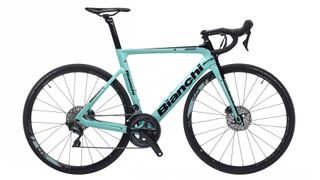
Bianchi Aria
The Bianchi Aria is one of the most versatile aero road bike offerings gathered here. Not only is it super-efficient in a straight line, boasting a phenomenal turn of speed, but it's also impressively responsive to directional changes thanks to the steep head angle and racy geometry.
The frame comprises all the aero-optimised shapes you'd expect from a bike of this nature, with an integrated frame and fork, dropped seat stays and a D-shaped seat post - it all looks very fast.
Like most modern road bikes, it's now disc brake only, and while it does err on the heavy side it still climbs well and offers impressive compliance despite lacking the Countervail technology as used on the brand's higher-value models such as the Oltre RC.
That said, if it's greater comfort you're after, the Aria can accommodate wider tyres - it comes with 28C road tyres as standard.
- Bianchi Aria Ultegra Di2 Disc
- Bianchi Aria 105 Di2 Disc
- Bianchi Aria Ultegra Disc
- Bianchi Aria 105 Disc
- Bianchi Aria Rival eTap AXS Disc

Canyon Aeroad
With a name such as Aeroad, there's no mistaking what this weapon was designed to do - attack the finish line as quickly as possible.
There are three frame specs for the Aeroad, starting off with the top spec CFR (Canyon Factory Racing), which is available with a range of premium groupsets and wheels, as well as a power meter as standard.
The CF SLX level frames are equipped with mid-level electronic groupsets, but still boast a power meter and quality wheelsets, while the entry-level CF SL frameset is specced with Shimano Ultegra and DT Swiss ARC 1600 wheels. Smaller size CF SL bikes come with 650b wheels to keep the geometry similar to larger sizes with 700c wheels. Canyon quotes a bike weight of 7.8kg for the most basic CF SL 8 Disc spec, dropping to 7.2kg for the CFR Disc Di2.
There's a new Canyon Aeroad on the horizon for 2023, with Mathieu van der Poel spotted winning Milan-San Remo and Paris-Roubaix on the new frame, which features subtle upgrades from its predecessor, the most obvious of which is a repositioned seatpost clamp.
- Canyon Aeroad CFR Disc LTD (not US)
- Canyon Aeroad CFR Disc Di2
- Canyon Aeroad CFR Disc eTap
- Canyon Aeroad CFR Disc EPS (not US)
- Canyon Aeroad CFR Disc MvdP (not US)
- Canyon Aeroad CF SLX 8 Disc Di2
- Canyon Aeroad CF SLX 8 Disc eTap
- Canyon Aeroad CF SLX 7 Disc eTap
- Canyon Aeroad CF SL 8 Disc

Scott Foil RC
The Scott Foil is another aero road bike that has had a recent makeover . Scott says that the changes have made the new bike lighter and more aero. Although the cut-out for the rear wheel makes it look as if the wheelbase has been reduced from the older model, the geometry is essentially unchanged. According to Scott the redesigned frame with its deeper tube profiles will save you over a minute over its predecessor over a 40km ride at 40km/h.
The new Foil is also claimed to be more comfortable, with a carbon bar-stem that helps absorb road chatter and, as with the Merida Reacto, a seatpost with a large cut-away section at its rear, into which you can fit a light. Claimed weight has dropped to 7.22kg and you can fit 30mm tyres.
- Scott Foil RC Ultimate
- Scott Foil RC Pro
- Scott Foil RC 10
- Scott Foil RC 20
- Scott Foil RC 30

The notion of aerodynamics is nothing new to Cervelo, having single-handedly created the aero road bike concept back in 2002 with the aluminium Soloist. With aerofoil tubing developed by NACA – the National Advisory Committee for Aeronautics – the Soloist was unlike anything seen before and started the aero genre that has taken over top level racing today.
The latest S5 dominated the 2022 Tour de France. It's had a more subtle upgrade than the Scott Foil, with the new 2023 model having frame clearance for 34mm tyres, tweaked tube profiles and a redesigned bar-stem that makes adjustment and maintenance easier than its predecessor. It's also gone disc brake and electronic groupset only - another trend in high-end bikes.
- Cervelo S5 Dura-Ace Di2
- Cervelo S5 Red eTap AXS
- Cervelo S5 Force eTap AXS
- Cervelo S5 Ultegra Di2

Factor Ostro VAM
Factor Bikes describes the Ostro VAM as an "everything bike". The VAM stands for " vertical ascent per minute", so as you'd expect it's lightweight and stiff to satisfy the climbers, with a frameset claimed to weigh 830g that Factor says can easily hit a sub-6.8kg build.
The Ostro VAM frameset is also aero, with truncated aerofoil tubing, front end integration and an aggressive ride position. Pair that with the option to fit 32mm tyres and a frame built for compliance and it's Factor's answer to the aero all-rounder.
It's designed to be easy to run, with CeramicSpeed SLT maintenance-free bearings and a T47 threaded bottom bracket. Factor builds to order and offers a wide range of bar-stem and groupset options as well as five different depths of wheels from its Black Inc sister brand.
Model Range
- Built to order
Aero is the road bike buzzword at present. But what makes an aero road bike, why are they so expensive and why do they all look the same ? Read on to find out.
What makes a bike aero?
The heart of an aero road bike is its aerofoil-shaped tube profiles. In fact, truncated aerofoils are used, which have the front end of a classic teardrop shape, but cut off the rear end sharply. This results in an aerofoil (like a plane's wing) that's as much as eight times longer than the actual tubing. Air behind the rear of the tube "completes" the aerofoil shape and results in the air flowing smoothly around the tubes.
This creates a frame that's significantly more aerodynamic than a classic round tube profile, reducing the effort required to keep the bike moving at all but the slowest speeds.
In addition, modern aero road bikes hide the brake hoses (and gear cables if these are present) within the bar and stem, routing them directly into the head tube.
As with round frame tubes, there's drag developed by exposed cables that's disproportionate to their width. This front-end integration and fitting bar-stems that are aerodynamically optimised save yet more energy.
Finally, an aero road bike will almost always be fitted with deeper section wheels, which are more aerodynamically efficient than shallower rims. The sweet spot tends to be between 40mm and 50mm deep, where there are significant watt savings, but the wheels are not too hard to handle in crosswinds.
Why do aero road bikes cost so much?
There's a significant amount of resource required to develop a modern aero road bike. That usually starts off with computational fluid dynamics (CFD) studies of airflow over the design and iteration of the design elements to optimise aero efficiency.
Life size 3D-printed models of the bikes are then usually tested in a wind tunnel, which is a pricey, labour-intensive process. Airflow may be modelled at different wind speeds and wind yaw angles to ensure good aerodynamic performance in a range of conditions.
There may be several iterations and designers may perch mannequins on the prototype frame to see the effect of the rider on airflow. Some mannequins can even pedal, as this movement can alter the results.
It's all additional work and cost over developing a traditional round-tubed bike, in addition to ensuring it passes all the relevant safety standards too. It has to be shown to be comfortable to ride and stiff enough for efficient pedalling as well.
Are aero road bikes uncomfortable to ride?
The initial crop of aero road bikes from around 10 to 15 years ago had a, not unmerited, reputation for being jarring to ride and heavy. Modern aero bikes have overcome this though, with designers learning how to maintain aerodynamics while building compliance into the frame. The ubiquity of disc brakes has seen a trend to wider, more comfortable tyres too.
Bike weight has decreased as well, with top spec modern aero bikes routinely approaching the UCI's magic 6.8kg weight limit, even with the disc brakes that are now the norm.
In most ride conditions, aerodynamics are more important than bike weight, so an aero road bike is usually a better choice for most riders, even on hilly rides. It will be faster on the way back down too.
Why do all aero bikes look the same?
A result of the focus on aerodynamics and the need for designers to keep to the UCI's rules on frame design is that there's limited scope to innovate in frame shape. The same physics apply to airflow over every manufacturer's frame.
Features like deep aerofoil sections, horizontal top tubes, a deep bottom bracket area, dropped seat stays, integrated hose routing and sharp frame junctions have the same effect for all bikes and so feature in the majority of designs.
Having said that, there's still room for innovations like the Trek Madone's split seat tube that can potentially stir things up and change the aero calculus.
Would an aero/lightweight bike be a better choice than a full aero road bike?
Some brands offer both a lightweight bike and an aero road bike, so you may have a choice if you've decided on a particular bike brand. The majority of lightweight bikes now include some aero features though, just not as extreme as a full-on aero bike, so there's less energy saving. In general they retain a significant weight advantage.
Examples of lightweight bikes which have had the aero treatment include the Bianchi Specialissima , the Merida Scultura , the Scott Addict RC and the Trek Emonda . Other brands have merged the two categories: take the Specialized Tarmac SL 7 and the Pinarello Dogma F for example.
For many riders, the combination of aero and light weight may be a compelling alternative to the all-out aero road bike.
Get The Leadout Newsletter
The latest race content, interviews, features, reviews and expert buying guides, direct to your inbox!
Paul has been on two wheels since he was in his teens and he's spent much of the time since writing about bikes and the associated tech. He's a road cyclist at heart but his adventurous curiosity means Paul has been riding gravel since well before it was cool, adapting his cyclo-cross bike to ride all-day off-road epics and putting road kit to the ultimate test along the way. Paul has contributed to Cyclingnews' tech coverage for a few years, helping to maintain the freshness of our buying guides and deals content, as well as writing a number of our voucher code pages.
Michelin’s Power Cup road bike tyres might just be the best value upgrade you can buy right now
The role of motivation and goal setting in cycling: How to set goals and stay motivated without burning out
Dan Bigham leaves Ineos Grenadiers for Head of Engineering role at Red Bull-Bora-Hansgrohe
Most Popular

Madone Vs Aeroad (7 Helpful Differences)
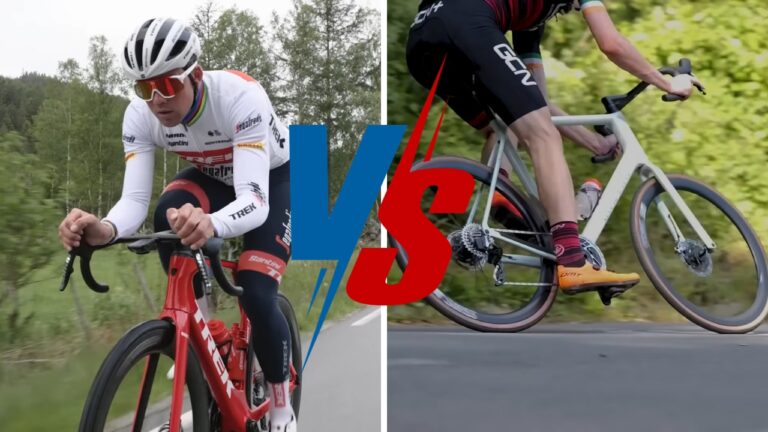
Both the Specialized Madone and Canyon Aeroad are top-of-the-line road bikes that offer great speed and performance. Here is a quick comparison of these two bikes:
Madone Vs Aeroad Bikes
The main difference between Madone vs Aeroad is that the Madone is designed for riders who want an all-round performance, while the Aeroad is designed for riders who want a race-oriented bike.
Both bikes are great options for anyone looking for a high-performance road bike , but if you’re looking to get the most out of your riding experience, it’s important to choose the right bike for your needs.
Specialized Madone
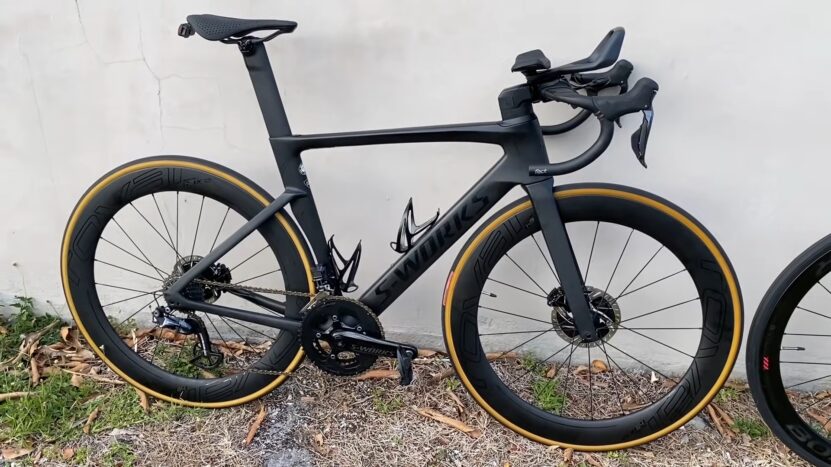
The Specialized Madone is an all-around excellent road bike. It is fast, light, and stiff, making it a great choice for both racing and training. The Madone is also comfortable, thanks to its smooth ride and well-designed geometry. Specialized offers the Madone in both rim brake and disc brake versions.
Canyon Aeroad
The Canyon Aeroad is another great option for a road bike. It is also fast, light, and stiff, making it a great choice for both racing and training. The Aeroad is not quite as comfortable as the Madone, but it is still a good choice for those who are looking for a fast and lightweight bike. Canyon offers the Aeroad in both rim brake and disc brake versions.
It really depends on your individual needs and preferences. If you are looking for an all-around great road bike, then the Specialized Madone is a great option. If you are looking for a fast and lightweight bike, then the Canyon Aeroad is a great option. Ultimately, the best bike for you is the one that best meets your needs and preferences.
Madone Bikes
Madone Bikes is a high-end bicycle manufacturer that offers a wide range of models for both road and mountain biking . The company was founded in 2006 by brothers Luca and Marco Madone, who are both avid cyclists. Madone Bikes is headquartered in Italy and has a strong presence in the European market.
The company’s philosophy is to produce bicycles that are “designed to be ridden, not just looked at.” Madone Bikes offers a wide range of models for both road and mountain biking, as well as a custom-build program. The company’s bikes are known for their innovative design, high-quality craftsmanship, and attention to detail.
The Madone is a classic road bike that has been updated for the 21st century. It features a lightweight carbon fiber frame and a comfortable riding position. The Madone is available in two different models, the SLR and the H2. The SLR is the top-of-the-line model and features aero tubing, which makes it incredibly fast. The H2 is the more affordable option and still offers great ride quality.
If you’re looking for a high-performance road bike that is lightweight and incredibly fast, then the Aeroad CF is a great option. However, if you’re looking for a more traditional road bike with a comfortable ride, then the Madone from Trek might be a better choice.
Aeroad Bikes
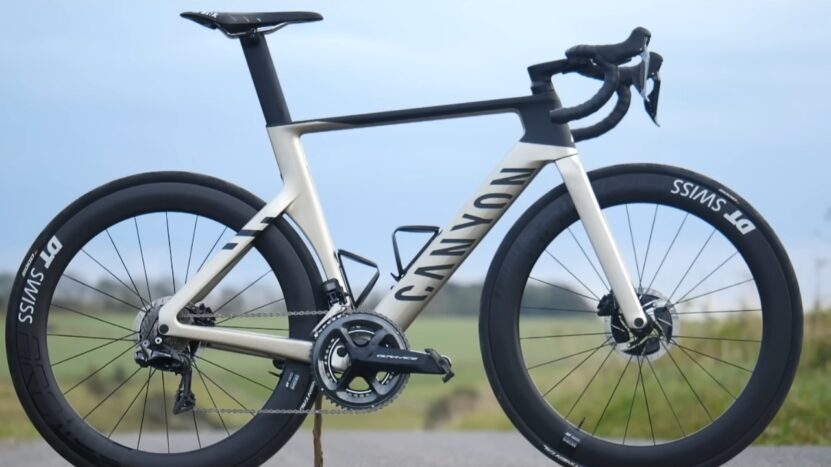
Aeroad Bikes is a bicycle manufacturer based in the United States. The company was founded in 2007 by two former professional cyclists, Johnathan Vaughters and Thomas Prehn. Aeroad Bikes specializes in road bicycles and has been a pioneer in the development of carbon fiber frame technology. The company’s flagship model, the Aeroad CF, was released in 2009 and quickly became one of the most popular road bikes on the market.
The Aeroad CF is built with a carbon fiber frame and features aero tubing, which makes it incredibly fast and aerodynamic. In 2012, the company released an updated version of the Aeroad CF, which included a new fork design and improved geometry.
Aeroad Bikes is one of the leading manufacturers of road bicycles and has won numerous awards for its products. The company’s bikes have been ridden to victory in some of the biggest races in the world, including the Tour de France and the Giro d’Italia.
Madone vs Aeroad Bikes Frame
When it comes to choosing a bike, one of the most important factors to consider is the frame. After all, the frame is what supports the rider and houses all of the other components. Here are some things to keep in mind:
- The Madone frame is made of carbon fiber , while the Aeroad frame is made of aluminum.
- The Madone frame is designed for racing, while the Aeroad frame is designed for both racing and training.
- The Madone frame is lighter than the Aeroad frame.
- The Madone frame is more expensive than the Aeroad frame.
If you’re looking for a lighter bike that’s designed specifically for racing, then the Madone is a good choice. But if you’re looking for a bike that’s versatile and can be used for both racing and training, then the Aeroad is a better option. Whichever frame you choose, you’ll be ride in comfort and style.
Madone vs Aeroad Bikes Groupset
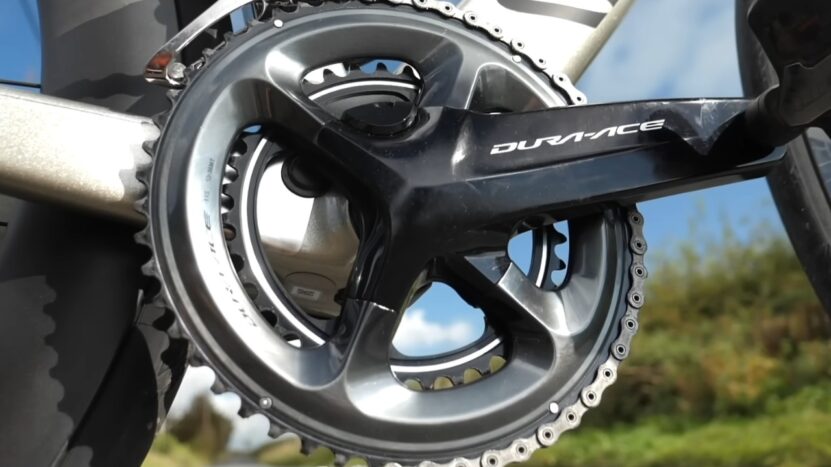
When it comes to groupsets, both the Madone and Aeroad bikes come equipped with Shimano Ultegra. This is a great Groupset that offers crisp shifting and plenty of power. However, there are some differences between the two.
The biggest difference is in the crankset. The Madone uses a Shimano Ultegra R8000 Compact crankset while the Aeroad uses a Shimano Ultegra R8000 Standard crankset. This means that the Madone has smaller chainrings, making it better suited for climbing.
The Aeroad also has slightly different gearing, with a 11-28t cassette instead of the 11-30t cassette on the Madone. This gives the Aeroad a bit more top-end speed, making it better for flat and fast riding.
Both bikes come with Shimano Ultegra brakes, but the Madone has direct-mount brakes while the Aeroad has standard rim brakes. The direct-mount brakes offer better stopping power, making the Madone the better choice for downhill riding.
If you’re looking for a great all-around bike that can handle a bit of everything, then the Madone is a great option. But if you’re looking for a bike that’s slightly better suited for flat and fast riding, then the Aeroad might be a better choice.
Madone vs Aeroad Bikes Wheels
Wheels are an important component of any bike and can have a big impact on performance. In general, deeper wheels are faster, but they can be more difficult to handle in crosswinds. Shallow wheels are easier to control in crosswinds but aren’t as fast.
Wondering about the optimal wheel size isn’t limited to road bikes. Choosing the right wheel size is equally crucial for mountain bikes, ensuring an ideal balance between maneuverability and stability on varied terrains.
It depends on your needs. If you’re looking for the fastest possible bike, then a Madone with deep wheels is probably the way to go. However, if you’re more concerned about control and stability in crosswinds, then an Aeroad with shallow wheels might be a better choice.
Madone vs Aeroad Bikes Tires
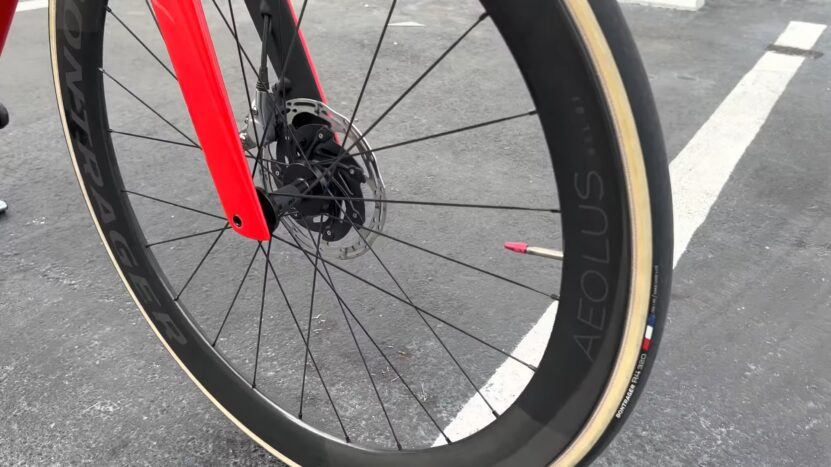
Tires are one of the most important factors to consider. The Madone has wider tires than the Aeroad, which provides better stability and comfort on rough roads. However, the Aeroad’s narrower tires make it more efficient for speed.
So, it really depends on what you’re looking for in a bike. If you want a fast, efficient bike for racing, the Aeroad is a great choice. But if you’re looking for a bike that’s more comfortable and stable on rough roads, the Madone is the better option.
Madone vs Aeroad Bikes Brakes
Brakes are an important consideration when choosing a road bike. Madone and Aeroad bikes both offer great braking power, but there are some key differences to consider.
Madone bikes have direct-mount brakes that offer excellent stopping power. These brakes are designed for racing and provide confident braking in all conditions. However, they can be tricky to adjust and are not as easy to work on as other brake types .
Aeroad bikes, on the other hand, have caliper brakes that are easier to adjust and maintain. These brakes don’t provide quite as much stopping power as direct-mount brakes, but they’re a good choice for general riding and training.
If you’re looking for the best possible braking performance, go with a Madone. If you want something that’s easier to work on and maintain, choose an Aeroad.
Madone vs Aeroad Bikes Saddle
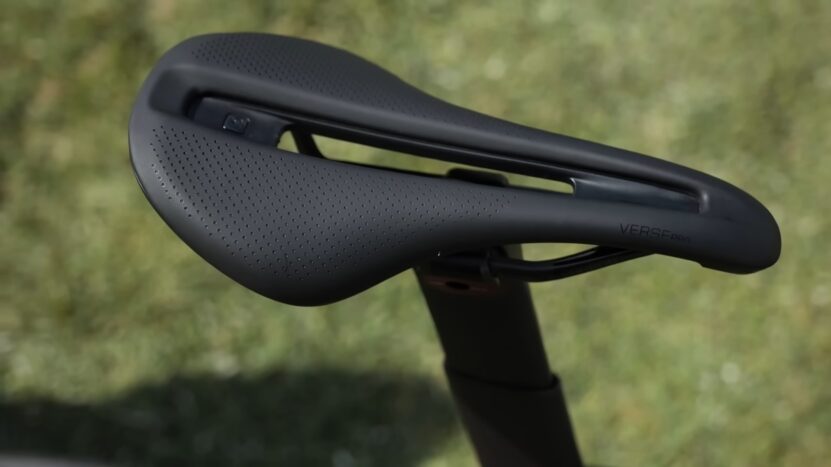
When it comes to choosing a saddle for your bike , there are two main types to choose from – the Madone and the Aeroad. Both have their own unique benefits that can make them ideal for different types of riding. So, which one is right for you?
The Madone saddle is designed for comfort and stability. It features a wide, flat surface that is ideal for long rides. The Aeroad saddle, on the other hand, is designed for speed and efficiency. It has a narrower profile that helps you stay in an aerodynamic position.
If you’re looking for comfort on long rides, the Madone is a great option. If you’re looking to go fast, the Aeroad is a better choice.
Madone vs Aeroad Bikes Riding Experience
The Madone and Aeroad bikes are two of the most popular road bikes on the market. Both offer excellent performance and ride quality, but there are some key differences that set them apart. Here’s a look at how they compare in terms of riding experience:
The Madone is a more traditional road bike, with a focus on lightweight construction and race-inspired geometry. It’s an excellent choice for riders who want a fast, agile bike that’s still comfortable for long days in the saddle. The Aeroad, on the other hand, is a bit more unique.
It’s designed with aerodynamics in mind, and as such it has a more aggressive riding position and deeper-section wheels. It’s an excellent choice for riders who want to go fast and are willing to sacrifice some comfort in exchange for speed.
If you’re looking for a traditional road bike that’s still light and fast, the Madone is a great option. If you’re willing to trade some comfort for speed, the Aeroad is a great choice.
Madone vs Aeroad Bikes: How To Choose?
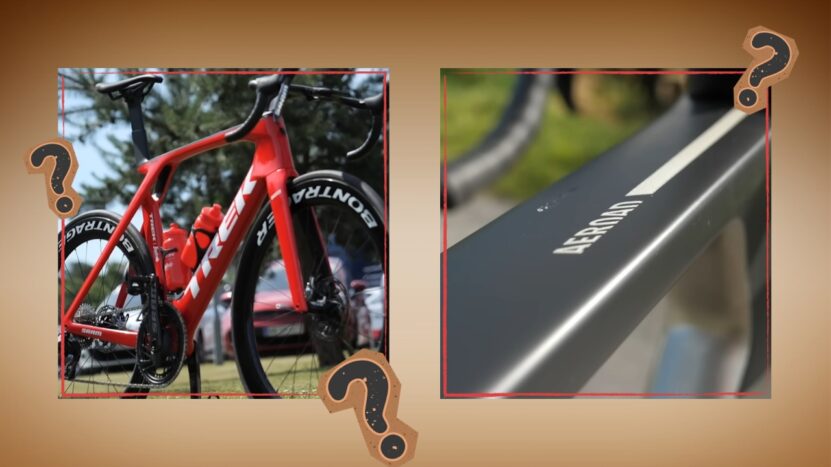
When it comes to choosing between Madone and Aeroad bikes, there are a few key points to keep in mind. First, consider what type of riding you’ll be doing most often. If you’re primarily a road rider, then the Madone is likely the better choice. However, if you plan on doing more cross-country or mountain biking, then the Aeroad may be a better option.
Second, think about the geometry of the two bikes. The Madone has a more traditional road bike geometry, while the Aeroad has a more aggressive race-inspired geometry. This means that the Aeroad will be better suited for riders who are looking to go fast and take on challenging terrain.
Finally, consider your budget. The Madone is a more expensive option, but it’s also a high-quality bike that’s built to last. The Aeroad is less expensive, but it’s still a great bike that can provide you with years of riding enjoyment.
In conclusion, the choice between the Specialized Madone and Canyon Aeroad ultimately boils down to individual preferences and riding priorities. The Madone caters to those seeking a versatile, all-around road bike with a comfortable ride, while the Aeroad targets riders prioritizing speed and a more aggressive, race-oriented geometry.
Considerations such as frame material, groupset, wheels, tires, brakes, and saddle play vital roles in shaping the overall riding experience. Whether opting for the Madone’s traditional road bike feel or the Aeroad’s aerodynamic efficiency, both models offer exceptional performance, ensuring riders can find a suitable match based on their specific needs and riding style.
Related Posts:
- Trek Madone Vs Domane Road Bikes (8 Key Differences!)
- Madone vs Tarmac
- Radrunner 2 vs Radrunner Plus (7 Helpful Differences)
- Sirrus vs Sirrus X Bike (7 Helpful Differences)
- Mongoose Dolomite Vs Malus Bikes (7 Helpful Differences)
- Specialized Sirrus vs Trek Fx Bikes (7 Helpful Differences)
Best aero bikes 2024: fastest speed weapons ridden and rated
We've ridden and rated the best aero bikes and these are our favourites
- Sign up to our newsletter Newsletter
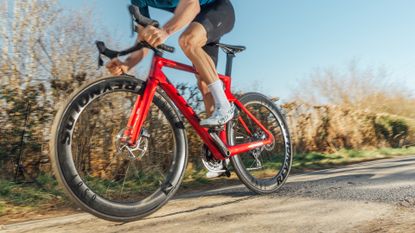
The Quick List
Best overall
Best handling
Best lightweight
Best all-rounder
Most adjustable
- What to look for
Best aero bikes 2023: Jump Menu
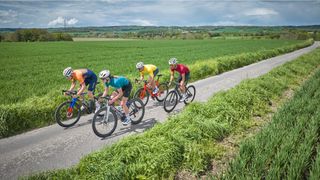
The list in brief ↴ 1. Best overall 2. Best handling 3. Best value 4. Best lightweight 5. Best all-rounder 6. Most adjustable
Advice What to look for
The best aero bikes can save you watts and help you to ride faster. Nearly every bike company has an aero bike somewhere in its range. And for good reason. Our independent testing shows that the difference between the best aero bikes and a lightweight bike with conventional round tube profiles could be as much as 25 watts at 45kph. It'd take a lot of training to gain 25 watts.
What makes a bike an aero bike? They're characterized by deep section tube shapes designed to reduce drag, integrated cockpits, disc brakes, and hidden seat post clamps. Often they'll have dropped seatstays and they will come with deep section aero wheels .
While it's all well and good having the fastest possible aero bike, you won't want to ride it very far if it's uncomfortable or too heavy. Happily, the latest generation of aero bikes boast impressively low weights and deliver a ride quality that's both comfortable enough for a long day in the saddle, as well as a sprint finish.
Increasingly, all-rounder race bikes are becoming more aero as well, with almost all of the best road bikes including many or all of the features mentioned above. The aerodynamic tuning may not be as extreme as the best aero bikes, but they'll be significantly faster than their round tubed predecessors.
We've tested a variety of the best aero bikes across a range of prices. Our picks are below, while towards the bottom of this page you'll find our buyer's guide to the best aero bikes and how to choose.
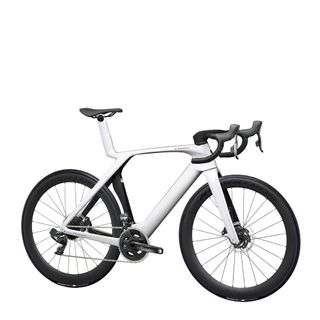
The redesigned Madone is everything a modern aero race bike should be: fast, smooth and light. The only thing not to like is the price.
Read more below
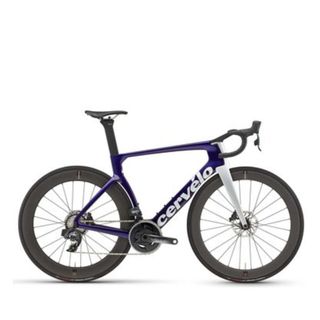
The latest S5 won our Race Bike of the Year award thanks to its sublime handling and its supreme comfort, both of which help make it seriously fast.

It's a relative term when you're discussing high-end aero bikes, but the Propel Advanced Pro 1 does deliver a lot of bike for the money.
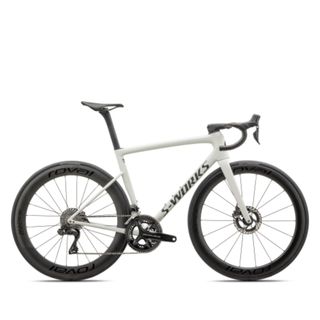
The revamped SL8 retains the agility of its predecessor but now it's both stiffer and lighter - the SRAM Red AXS equipped model weighs just 6.6kg.
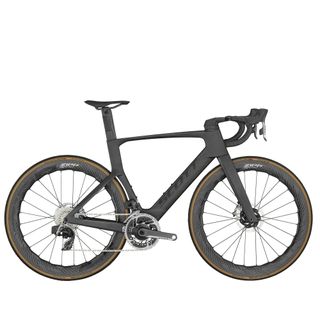
To gain this title an aero bike needs to be fast yet comfortable with handling that's responsive but assured. The updated Foil is all these.
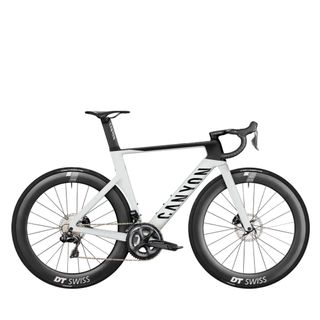
The Aeroad is light and fast and holds its own among the best aero race bikes. The adjustable cockpit is an added bonus with three width settings.
Best aero bikes: our picks
Best aero bike overall.
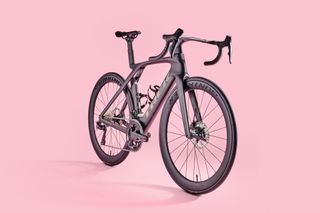
1. Trek Madone SLR 7
Our expert review:
Specifications
Reasons to buy, reasons to avoid.
The seventh generation Madone impressed us enough to win 'best aero' category in our Race Bike of the Year awards. That it was up against stiff competition only deepened our appreciation of this striking machine.
The redesign has made the Madone lighter - our test model weighed just 7.5kg, which is light indeed for an aero bike. As a result it performed well when the road pointed up. But it was the overall ride quality that really caught our attention. It floated over poor road sections, even on 25mm tires, and handled beautifully on descents and around corners. It's an enviable combination that any race bike would love to achieve - and the Madone does it with style.
Taking of style, the new IsoFlow tech may look different, but in conjunction with the new aero cockpit, it's clearly working. The Madone is flat out fast. Trek's claims of a 300g saving, coupled with it stating that it's almost 20 watts faster than its predecessor seems legitimate. However, all these improvements do make for a price tag that will likely make you wince.
Read more: Trek Madone SLR7 full review
Best aero bike for handling
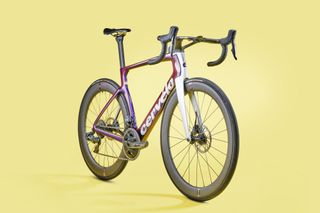

2. Cervélo S5
If you followed our Race Bike of the Year awards, you'll know that the Cervélo S5 took top honours. That it doesn't quite win best aero bike here isn't a knock however, rather its testament to the updated S5's ability to perform brilliantly across the board.
In simple terms, for a blend of aerodynamics, comfort and handling, it's just hard to beat. It's little wonder that it's the choice of team Jumbo-Visma in all but the hilliest of stages and has been an important part of their recent successes, which includes back-to-back TdF titles no less.
So what makes it handle so well? It's really the balanced geometry that means you can ride hard without it ever feeling twitchy. The wheel and tire combination also play a part in the bike's impressive comfort and grip. On test our 28mm tires actually measured over 31mm, thanks to the generous internal rim width of the Reserve wheels.
Read more: Cervélo S5 SRAM Force full review
Best aero bike for value
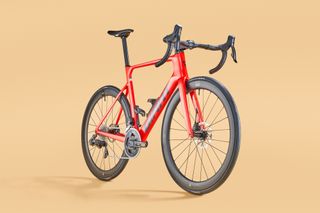
3. Giant Propel Advanced Pro 1
The updated Propel saw it slim down a little, especially the frame's rear triangle. It's helped make it more comfortable and a little more versatile, while still retaining it's genuine aero credentials. In fact, Giant says it's faster than the previous model by some 6.2 watts at 40kph.
Tire clearance has been upped to 32mm, which further aids comfort and handling. On review, it all added up to a smoother ride compared to previous iterations, so much so that it could easily be your every day road bike. If this raises eyebrows given the Propel's weight, we think that unless you live and ride in the mountains, it's unlikely to be a penalty - with the bike's innate speed more than making up for the number on the scales.
While the Propel Advanced can be had in various builds, our Advanced Pro 1 represented good value. While it's not cheap, it delivers unmatched performance-to-price ratio, making for an "excellent bike with an exceptional price".
Best lightweight aero road bike
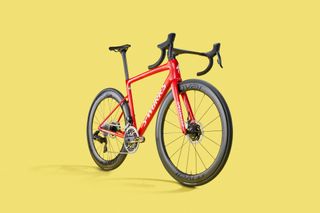
Specialized Tarmac SL7 merges aero and lightweight
4. Specialized S-Works Tarmac SL8
The new SL8 builds on the aero all-rounder profile of the previous Tarmac. Designed a race bike for all occasions - or stages - the update is said to be lighter, stiffer and more aero.
Certainly the drop in frame weight is notable. Using the same layup as the featherweight Aethos, Specialized have shaved off the grams, with the SL8 frame weighing just 685 grams. This helps make for a total weight of just 6.6kg for the S-Works model in a size 56cm.
We found it added up to a bike that's super stiff and just as responsive. If you like the SL7, you'll be pleased to read that the geometry of the SL8 is much the same. The result is the same playful characteristics that translate to a fast and snappy ride feel.
Read more: Specialized S-Works Tarmac SL8 full review
Best aero all-rounder
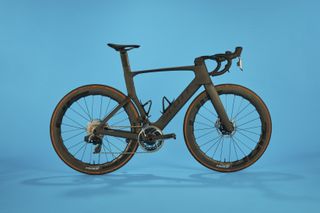
The new Scott Foil is lighter and more aero but also more comfortable
5. Scott Foil Ultimate RC
The latest iteration of the Scott Foil has new, deeper tube profiles that Scott says improve the bike's aerodynamics, delivering a ride that's 1m 18s faster over 40k at 40kph. The curved seat tube hugs the rear wheel, although Scott says that the geometry is unchanged from its past Foil models.
Scott has reduced the number of joints in the frame as well, which it says reduces weight, although this - very expensive - Ultimate spec still weighs 7.3kg, which is a little more than its rivals.
Comfort is also said to have increased, in particular thanks to the large cut-out in the rear of the seatpost, which adds a significant amount of flex at the saddle.
Fast on the flat and on gently descending roads and with good vibration damping on coarse tarmac, the Foil does show its weight on steep ascents, although that's mitigated by reassuring handling on descents.
Read more: Scott Foil Ultimate RC full review
Best aero bike for adjustment
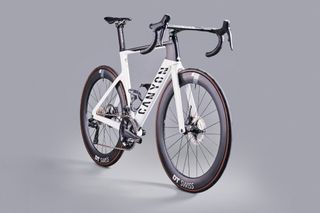
6. Canyon Aeroad CF SLX 8
Another aero bike that makes a solid claim as being an all-rounder, the Aeroad is fast, responsive and pretty lightweight.
There's some compliance there too, with rear-end comfort delivered by a combination of a 28mm rear tire and a flexing seatpost. However, it's the Aeroad's level of adjustability that really sets it apart from other aero race bikes.
The stack height can be altered by 15mm without having to do any fiddly re-cabling or steerer tube cutting - but does require a proprietary headset tool. The width-adjustable cockpit, with Canyon says aids the bike's aerodynamics, delivers 40mm of adjustability, three width settings and collapsibility for travelling. Whether you feel the need to adjust your cockpit width is another question, however.
Read more: Canyon Aeroad CF SLX 8 full review
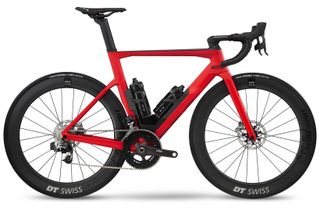
BMC Time Machine 01 Road Four
7. BMC Timemachine 01 Road
Since its introduction in 2012, the BMC Timemachine has always been a head-turner, but there was no doubting its purely functional credentials, sacrificing comfort for ultimate speed.
The platform has come a long way since then, and the Timemachine Road iteration is far more rider friendly, and while it retains its rapidness, the latest design manages to also shoehorn in an element of compliance, with the end result being pretty close to perfect.
Equipped with a Shimano Ultegra Di2 disc brake set up, semi-integrated cockpit, 62mm deep section DT Swiss Arc 1400 Dicut 62 wheels and fast rolling Vittoria Corsa Control tires it leaves you with no question as to the bike's ambition, but with the added comfort factor, it now means it's a lot more than just a one trick pony. Our only grumble is with the limited 25mm tire clearance.
Read more: BMC Timemachine 01 Road full review
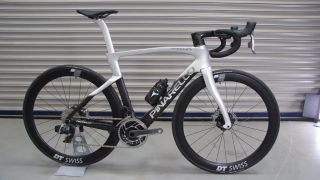
Pinarello Dogma F
8. Pinarello Dogma F
Pinarello's superbike is still the winningest Tour de France bike of the last decade, even if the Dogma F is yet to chalk up an overall win. There are several build options, including an increasingly rare a direct mount rim brake option.
Pinarello says that the F is the lightest version of the Dogma yet, thanks to parts like a 3D printed titanium saddle clamp and redesigned bar/stem rather than a drop in frame weight. It's marginally faster than its predecessor as well. There are 352 different frame and component size options available, so there's plenty of scope to fine-tune your fit.
It's a dream of a bike, a rapid, nimble ride, and of course, with the price tag, a rather expensive one at that.
Read more: Pinarello Dogma F first ride review

Cannondale SystemSix Carbon Ultegra Di2
9. Cannondale SystemSix Carbon Ultegra Di2
The SystemSix is Cannondale's first ever dedicated aero road bike, and the brand has come out swinging. It looks exactly the way you'd expect an aero bike to look: it's all stark angles and chunky tubes and you'd be forgiven for thinking it'd be uncomfortable, but actually the SystemSix has comfort at odds with its chunky looks.
It's also a very fine handling bike, with a geometry that almost matches the Cannondale SuperSix Evo and hydraulic brakes that instil confidence on descents.
The SystemSix rolls on the Cannondale's Knot 64 wheels which are tubeless ready, very stiff and spin along like a freight train. Teaming it with the much rated Shimano Ultegra Di2 for rapid electronic shifting is the ultimate partnership.
With two back to back years as a Cycling Weekly Editor's Choice award winner, we can't speak highly enough of Cannondale's aero offering.
Read more: Cannondale SystemSix full review
Buyer's guide to the best aero bikes: what to look for
There are a few things to consider before opting for an out-and-out aero bike, particularly since you can get many of the benefits of a full-on aero bike from an aero optimised all-rounder road bike.
Why would you buy an aero bike?
Well that's a very good question that. With the Cycling Weekly wind tunnel still seeking funding from the powers that be, we can't answer with complete scientific accuracy. However, we have conducted a couple of experiments in the past that have compared the performances of aero bikes with non-aero bikes.
In the first of these, we took two bikes to a velodrome to test how much faster is an aero bike . We rode each bike (a now superseded Cervélo S5 and Canyon Ultimate CF SLX ) for 10 minutes at 200W and 10 minutes at 300W, with the aero bike being 275m ahead and 1.7kph faster when ridden at 200W, and 435m ahead and 2.6kph faster when ridden at 300W.
In the second experiment we pitched an aero bike (again the Cervélo S5) against a lightweight bike (a Focus Izalco Max ) on a climb, tackling Box Hill in Surrey twice on each bike, again at 200W and 300W, to see which climbs faster , despite the Cervélo S5 being 800g heavier.
However, this time it was the lightweight bike that came out on top. At 200W, it took our test rider 9:24 to tackle the 2.5km climb on the aero bike at an average speed of 15kph, while the lightweight bike was 18 seconds faster with an average speed of 16kph.
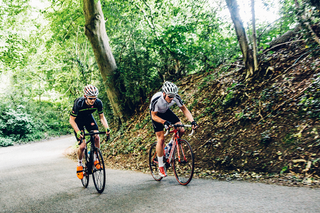
At 300W, the lightweight bike was still faster, but the gap between the two was reduced, with the aero bike only being seven seconds slower with a 0.4kph difference in speed. This shows how much more important aerodynamics become at higher speeds, while weight is more of a factor at lower speeds.
The take home message then, is that for most riders over most terrain, an aero bike will be faster than a lightweight bike. The only case where weight begins to become more of a factor is on steeper climbs where you're travelling more slowly, and even then any time gains could well be balanced out on the descent, where the high speeds are going to make aerodynamics a factor again.
What features should I look out for in an aero bike?
At a most basic level, all aero bikes should come with tubes that have been shaped to smooth airflow, meaning that they will have a slender front profile but elongated rearwards.
However, manufacturers can't go crazy if they want to see their bikes used in races, with the UCI's rules still restricting how deep tube profiles can be. The latest iteration of the rules has relaxed those governing tube shapes though, so the latest crop of aero road bikes has significantly more aero tuning than its predecessors.
Whereas the first aero road bike, the original Cervelo Soloist, had teardrop shaped tube sections, all now use kammtail tube profiles. This means that the tube retains an aerofoil shape at the front, but with the back half lopped off to give it a flat back.
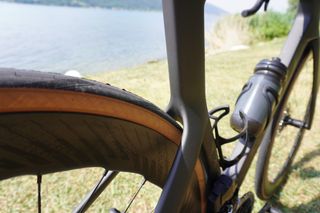
A lot of people say that aero bikes now all look the same and a possible reason is because of the use of popular dropped rear stays, which the industry has collectively decided is the most aerodynamic shape. Helpfully, it's also comfortable, too.
Many aero bikes include a chunky bottom bracket shell. Again, this enhances aerodynamics as the air flows more smoothly over the bottom bracket area. It also adds stiffness and improves pedalling efficiency .
What is integration and what's its benefit?
Integration is also a big feature of aero bikes, with almost all aero bikes aiming to hide as much hardware as possible within the frame.
The key to this is cable routing. The sleekest aero bikes keep the gear cables and brake hoses hidden, routing them through the handlebars, stem, and frame before they emerge close to their partner components, usually on the rear side of the tubes to keep them out of the wind.

It's a feature that's now common on the best all-rounder road bikes too and that's made easier by the switch of high-end road bike groupsets to wireless electronic shifting.
You can also expect an aero profile seatpost with a hidden clamp, which will reduce turbulence. Many aero road bikes also include features to shield the bottles and bottle cages from the airflow and reduce turbulence around them.
Now, however, the market has moved a long way from integrated brakes, and disc brakes are the most common stoppers that you'll find on aero bikes, with some models even being disc brake specific. The bike brand's argue that they've managed to design the latest models around the rotors, or generate more aero savings across the frame.
However, possibly the most important part (or parts) of a seriously sleek aero bike are the wheels. Again, there's been a lot of development in the best road bike wheels with wheel makers typically wind tunnel testing them to enhance their aerodynamic performance in a headwind and stability and aero gains in crosswinds.

Deep section wheels are the norm on aero bikes
How easy is an aero bike to live with?
Yes, for most people on most terrain, an aero bike will be faster, but if you're considering buying one, you also have to weigh up what day-to-day life will be like with your new pride and joy.
It used to be the case that the more aerodynamic the bike, the more difficult it was to live with, mostly because of complicated internal cable routing. This can make altering cable and brake hose length or raising and lowering stack height a bit of a pain because it involves cutting cables and bleeding brake hoses to do so. However, many modern aero bikes now come with split spacers, which makes this process a lot easier.

Aero integrated handlebars can make cable and brake hose mechanics a bit more difficult
Finally, if you're going to get the most out of your aero bike, then you might want to fit a rear light to up your road presence or you may occasionally find yourself riding in the dark. In this case, aerodynamic seatposts and handlebars can make it a little tricky to fit bike lights ,
A standard cycling computer mount probably won't fit to aero handlebars, so you'll often need an out-front mount that's specific to your bike. It may be included with the bike or in some cases it's an extra.
Some makes allow you to fit an integrated rear light into the seatpost, so that it doesn't interfere with aerodynamics. The shape of the seatpost and an integrated light may also limit the saddlebags you can use - but you didn't really want to wreck your bike's aerodynamics with a bag on the rear did you?
How else can I be more aero?
Before you rush, wallet open, to your local bike shop in search of the latest aero bike, it's worth considering that there are plenty of other much cheaper ways to make some aerodynamic gains.
The vast majority of the wind resistance that you have to overcome while cycling is caused by you, so your position and clothing choice can make a big difference to your speed and there's a lot of aero optimisation you can do.
Riding in a low, crouched position with your hands on the hoods, elbows bent, is roughly 20 per cent more aerodynamic than riding upright with your hands on the tops.
Similarly, tight-fitting aerodynamic clothing and an aero cycling helmet can also make a significant difference. The benefits might not be as pronounced as with changing your position, but if you're riding along with a baggy rain jacket unzipped and flapping in the wind, even if it is one of the best waterproof cycling jackets , then you can wave goodbye to any gains that you might have got from your expensive aero bike and flash deep sections wheels.
How much should I pay for an aero bike?
With aero bikes now being available at almost all price points, it's more a case of how much can you afford to pay rather than how much do you need to pay.
At the top-end of the scale, it's not unusual to see aero bikes costing over £10,000 / $10,000, which should be enough to get you a cutting-edge frame matched with some pretty tasty components and deep section wheels for a seriously aero machine that's similar to a bike ridden by the pros.
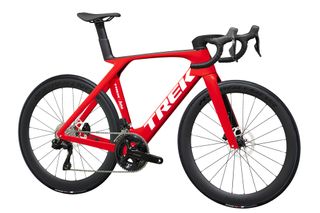
Top end models like a high spec Trek Madone will cost over £10,000 / $10,000
However, for a lot less you will often be able to pick up a bike with a frame that might not have the same premium quality carbon fibre (and so may be less stiff and will usually be heavier) but will have the same shaped tubes which will still be subject to the same laws of physics, at least on the flat and downhill.
Wheel choice is also important when considering how much to pay for an aero bike. If you already have aerodynamic, deep section wheels, then there's no point in paying more money for an aero bike that comes with similarly posh wheels.
Instead, buy the bike with the cheaper wheels, take these off to use as training wheels, then put on the deep section wheels that you already own for race days.
Get The Leadout Newsletter
The latest race content, interviews, features, reviews and expert buying guides, direct to your inbox!
Paul started writing for Cycling Weekly in 2015, covering cycling tech, new bikes and product testing. Since then, he’s reviewed hundreds of bikes and thousands of other pieces of cycling equipment for the magazine and the Cycling Weekly website.
He’s been cycling for a lot longer than that though and his travels by bike have taken him all around Europe and to California. He’s been riding gravel since before gravel bikes existed too, riding a cyclocross bike through the Chilterns and along the South Downs.

Williams comes out on top in Redcar against former two-time World Champion
By Tom Thewlis Published 4 September 24

Cummings was on the provisional start list submitted to the race organiser, but was replaced by Kurt Bogaerts
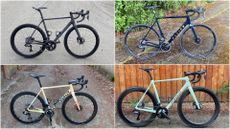
Offering an alternative to bikes made overseas, these smaller operations are making high-quality carbon bikes closer to home
By Tyler Boucher Last updated 27 June 23
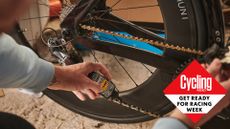
We talk you through a pre-race check up as well as offer a few tips on how to fine-tune your bike for race conditions
By Luke Friend Published 14 February 23

The best cycling multi-tools will solve the majority of your on-bike mechanical problems
By Paul Norman Last updated 16 November 23

The best handlebar bags will let you carry a good proportion of your bikepacking gear or just your extras for a day ride
By Stefan Abram Last updated 11 July 23
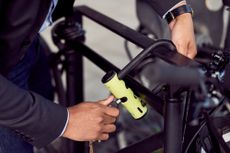
If you love your bike you will need one of the best bike locks if you plan to leave your bike unattended - We have tested the best bike locks for securing your pride and joy
By Simon Smythe Last updated 8 August 24

We look at the best available protein and recovery drinks to ensure you’re recovered and good to go for your next training session
By Andy Turner Last updated 29 November 23
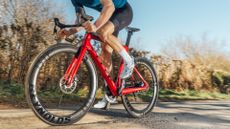
Our complete guide to what to look for in the best road bike wheels
By Paul Norman Last updated 22 August 24

Cycling vests are one of the most flexible pieces of clothing in your cycling wardrobe. We explain what should you be looking for and round up our favourites.
By Henry Robertshaw Last updated 6 June 22
Useful links
- Tour de France
- Giro d'Italia
- Vuelta a España
buyers-guides
- Best road bikes
- Best gravel bikes
- Best smart turbo trainers
- Best cycling computers
- Editor's Choice
- Bike Reviews
- Component Reviews
- Clothing Reviews
- Contact Future's experts
- Terms and conditions
- Privacy policy
- Cookies policy
- Advertise with us
Cycling Weekly is part of Future plc, an international media group and leading digital publisher. Visit our corporate site . © Future Publishing Limited Quay House, The Ambury, Bath BA1 1UA. All rights reserved. England and Wales company registration number 2008885.
- MAGAZINE OFFERS
- BIKE INSURANCE
- Best Products
- Maintenance
- Accessories
- Long-Term Reviews
- First Look Friday
- Bike of the Week
- Tech Features
- Routes and Rides
- Bike Galleries
- BikeRadar Bargains
- Buyer's Guides
- Fitness & Training
- Sizing & Fit
- Mountain Biking UK
- Cycling Plus
- BikeRadar Podcast
Best aero road bike 2024 | 20 top-rated aero bikes and buyer's guide
The best aero road bikes tested by BikeRadar – and everything you need to know about these go-fast aerodynamic machines
Steve Sayers / Our Media
Paul Norman
The best aero road bikes add an extra dose of speed to your ride, and the pursuit of speed is undoubtedly part of what makes cycling so exhilarating. When it comes to going fast, on the flat or downhill at least, aerodynamic drag has the biggest influence.
Representing the leading edge of road-bike technology, the best aero road bikes challenge traditional notions of what makes a fast race bike.
The latest aero bikes combine wind-cheating profiles with next-level integration to make these machines as slippery as possible. Sure, they may not always be at the cutting-edge when it comes to weight, but if you think an 8kg road bike can’t be fast, think again.
Are aero road bikes worth it?
Aero bikes are commonplace in the pro peloton, where riders are chasing marginal gains and, of course, have access to the latest WorldTour bikes from their team sponsors.
The angular, sculpted frames of aero bikes particularly come to the fore on long, flat stages and under the sprinters, where the lower drag of wind-cheating tube profiles can give them the extra turn of speed they need to clinch a victory.
Teams and their bike sponsors will typically provide riders with the choice between an aero bike and a lightweight climbing bike , and some riders will swap between them depending on the terrain.
Some riders now stick to their aero bikes regardless of terrain, riding them on more undulating and mountainous territory. This is particularly true for breakaway specialists, who spend a lot more time in the wind than other riders and seek out whatever advantage they can get.
That said, one of the recent trends in bike design has been the combination of low weight and aerodynamics, and some brands offer just one machine to meet both requirements. The Specialized S-Works SL7 and Pinarello Dogma F are just two examples of aero-influenced all-rounders.
However, aero road bikes are the fastest option out there in the majority of circumstances and you don’t have to be a pro to benefit, especially if you’re a rider who places a lot of significance on riding fast. After all, for a lot of people, riding fast is fun .
Still, there is a lot to consider when it comes to finding the best aero road bike for your needs, especially for everyday riding.
For those of us who aren’t blessed to be WorldTour pros with a team of mechanics at hand, an aero bike still needs to be easy to live with. Do you need an engineering degree to maintain it? Do the deep-section wheels make it a handful on windy days? How does it perform on broken roads?
We’ve answered all of those questions in pursuit of finding the best aero bikes money can buy.
Read on for our pick of the best aero bikes, as tested by the BikeRadar team, and read our full buyer’s guide at the end of the article to help you find the right bike for you.
The best aero road bikes in 2024, as tested by BikeRadar
Cannondale systemsix hi-mod etap axs.
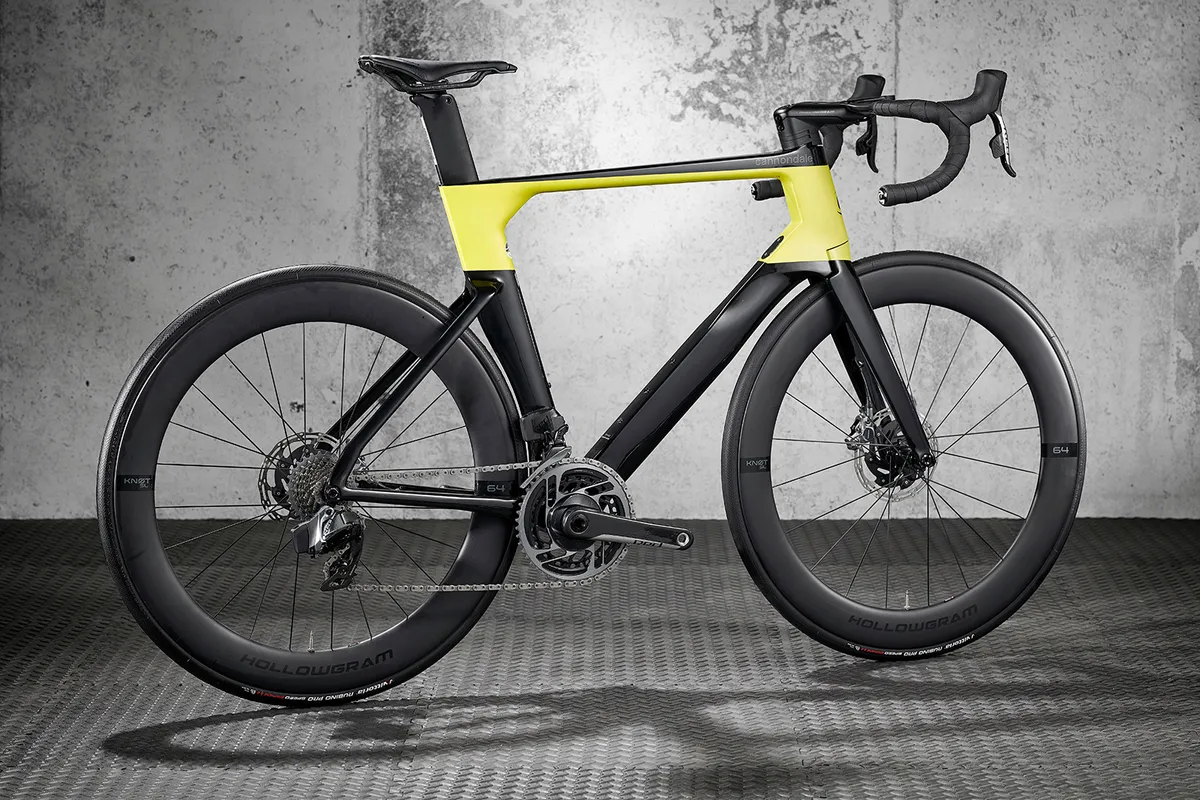
- £10,500 / $12,500 as tested
- Still one of the fastest bikes in the world
- Nimble handling and a comfortable ride
This Cannondale SystemSix is an incredibly fast bike that left us feeling other brands are still playing catch-up with Cannondale when it comes to creating aero bikes.
The Hi-Mod frameset is Cannondale's stiffest carbon fibre, and despite the stiffness and aero tubing, we found this to be a remarkably comfortable bike to ride.
This bike has a halo-spec with a SRAM eTap AXS groupset, 64mm-deep carbon wheels and Cannondale's two-piece aero KNOT handlebar, which still allows for plenty of adjustment.
The price is high, but when you compare it to other bikes of this spec it's competitive, and there is always the Cannondale SystemSix Carbon Ultegra .
- Read our full Cannondale SystemSix Hi-Mod eTap AXS review
Canyon Aeroad CF SLX 7 Disc eTap
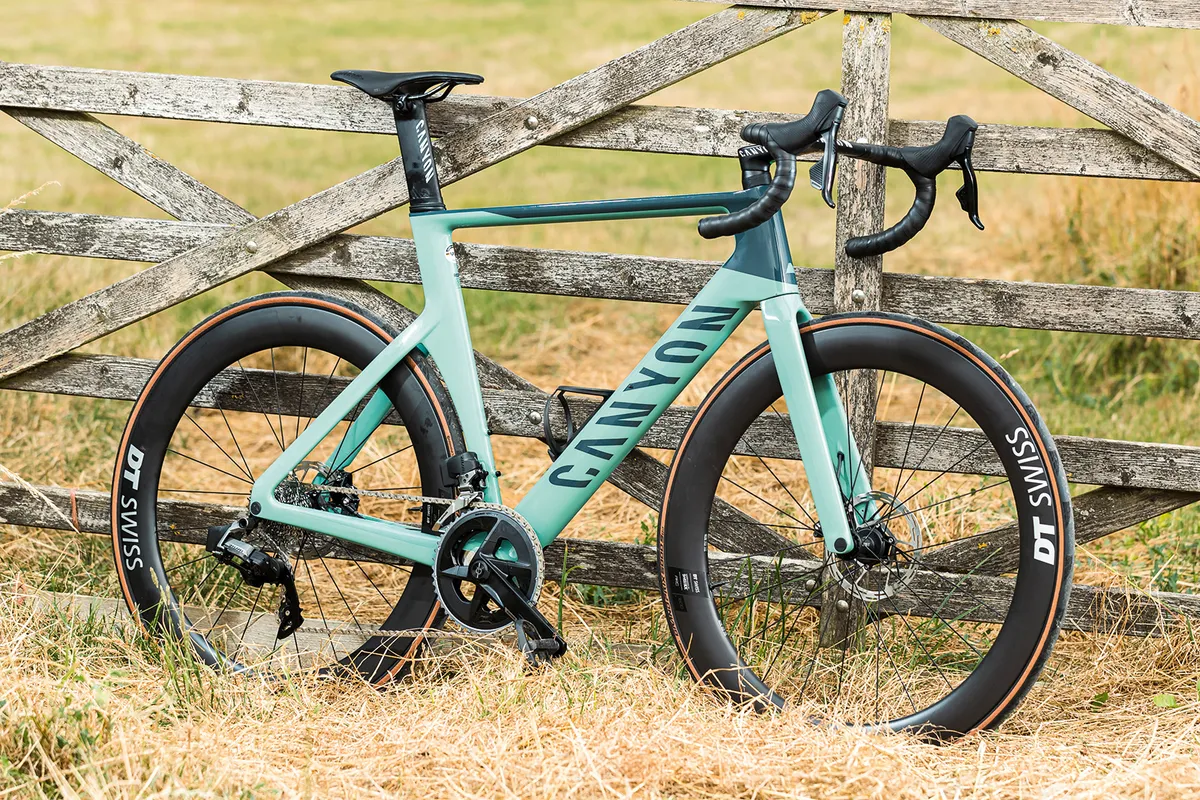
- £4,949 / €4,999 / AU$7,399 as tested (CF SLX 8.0 Disc eTap $7,499 in US)
- Great spec with SRAM Rival eTap and a power meter
- Superb ride that's fast but comfortable
The latest Canyon Aeroad is a superb ride: lightning-fast and efficient but still comfortable enough over broken surfaces, with a 28mm rear and 25mm front tyre helping smooth things out.
The component list on this model includes SRAM Rival eTap AXS complete with (single-sided) power meter and 50mm-deep DT Swiss carbon wheels.
Canyon's clever three-piece bar makes width adjustment and travelling with the bike easier. The 8.3kg weight for the size large is competitive too. We did get some front-brake rub; it was easily fixed, but with Canyon, you don't have the benefit of a shop to help if you need to tweak things.
- Read our full Canyon Aeroad CF SLX 7 Disc eTap review
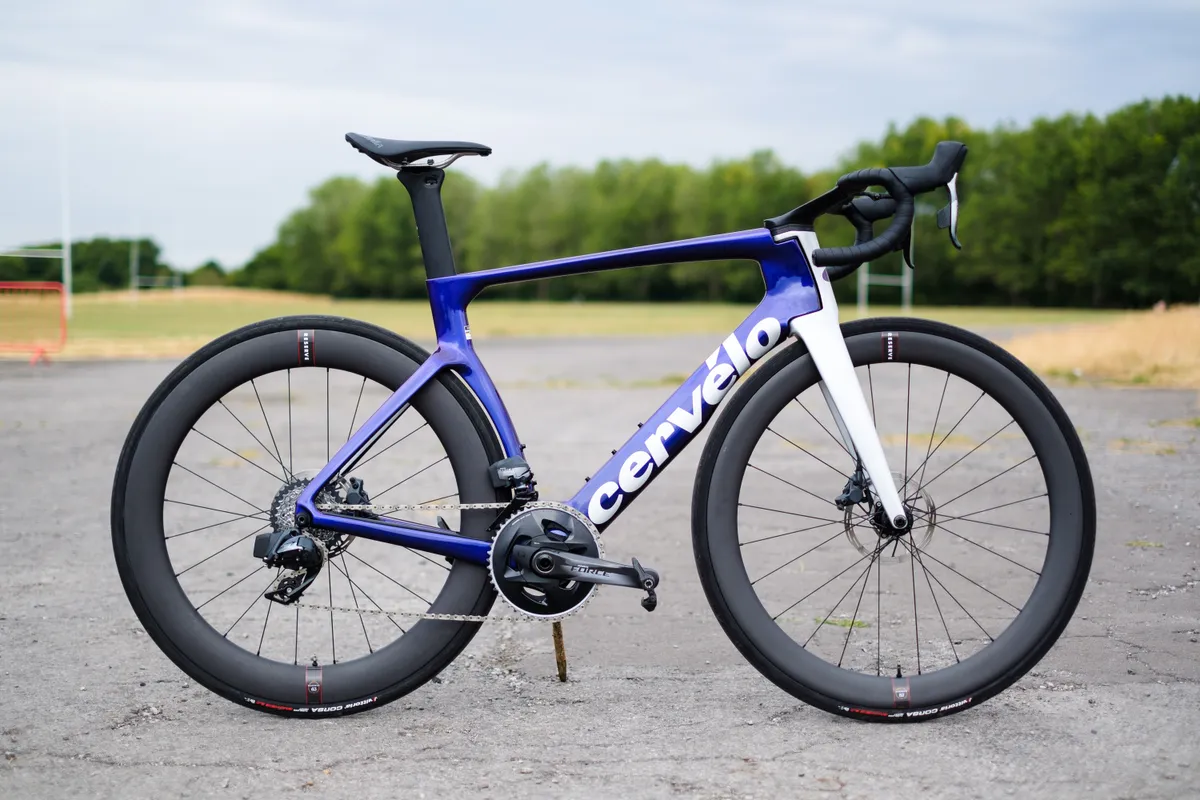
- £9,599 / $9,000 / €10,199 as tested
- Wide tyres for a comfortable ride
- Fast, sharp, responsive ride feel
Cervélo has made some subtle changes to the S5 with the latest model, announced in July 2022 . The tube shapes have been tweaked to make them a little more aero, the front-end design has been simplified and made easier to adjust and there's 6mm wider clearance, so you can fit tyres up to 34mm.
The result is a bike that feels incredibly fast but also smooth, with the fitted nominally 28mm tyres measuring 31.7mm. It's also really sharp-handling, planted at speed and still firm enough to respond immediately to pedal input.
The S5 isn't a light bike though, at 8.2kg for a size 56cm, and there's not much fore and aft saddle adjustability, although seatposts with different setback are available.
- Read our full Cervélo S5 review
Cervélo Soloist Ultegra Di2
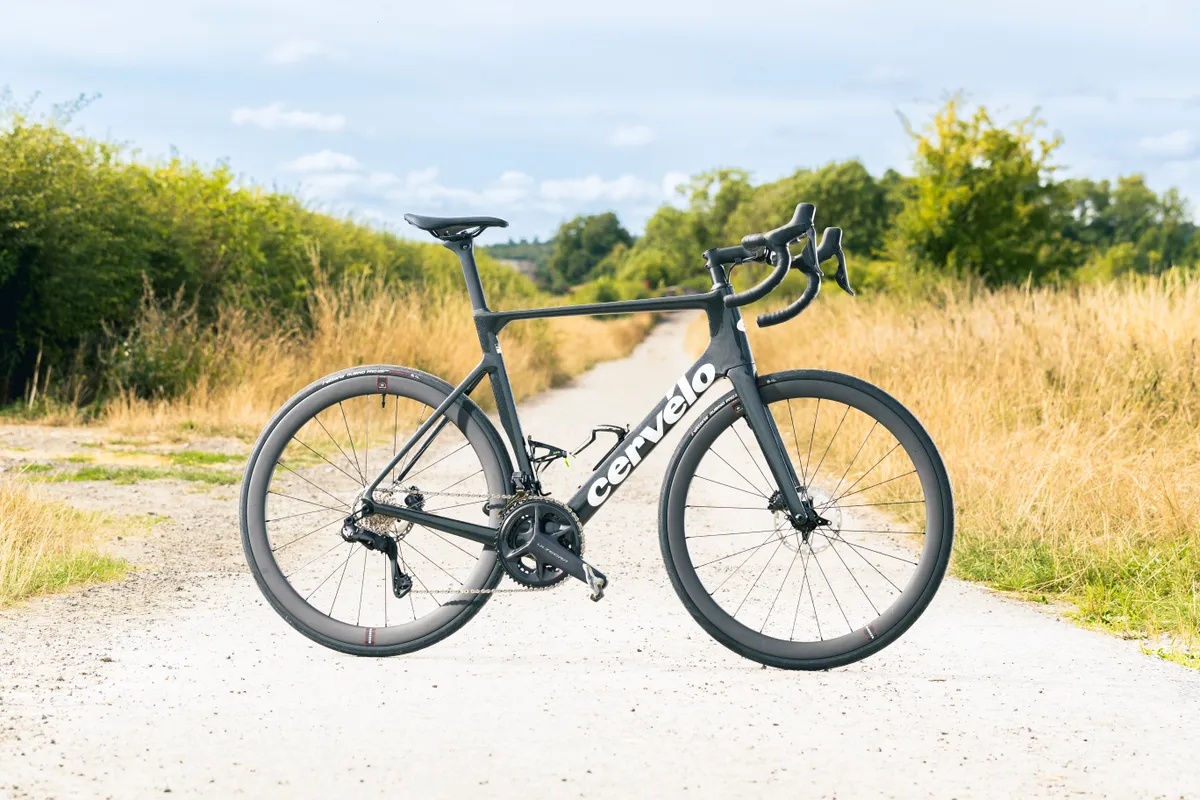
- £6,800 / $6,800 as tested
- Balance of speed and comfort, but some rivals are lighter
- A few spec concessions on this model
The Cervélo Soloist was the original aero bike, released in 2002, and the Canadian company has now resurrected the Soloist name 20 years later .
With the S5 pitched as Cervélo's pro-level aero bike, the Soloist is aimed at speed-hungry amateurs, with a (slightly) more affordable price and all-round flavour. It's claimed to be lighter than the S5 and more aerodynamic than the R5, and offers clearance for 34mm tyres.
And the result on the road? The Cervélo Soloist Ultegra Di2 is a very comfortable and fast aero-optimised racer deserving of the Soloist name. Sure, it may give up speed and weight to other Cervélo bikes, but if you want an aero-influenced bike that offers a bit of everything, this is a contender.
- Read our full Cervélo Soloist Ultegra Di2 review
Cube Litening SLT C:68X SL
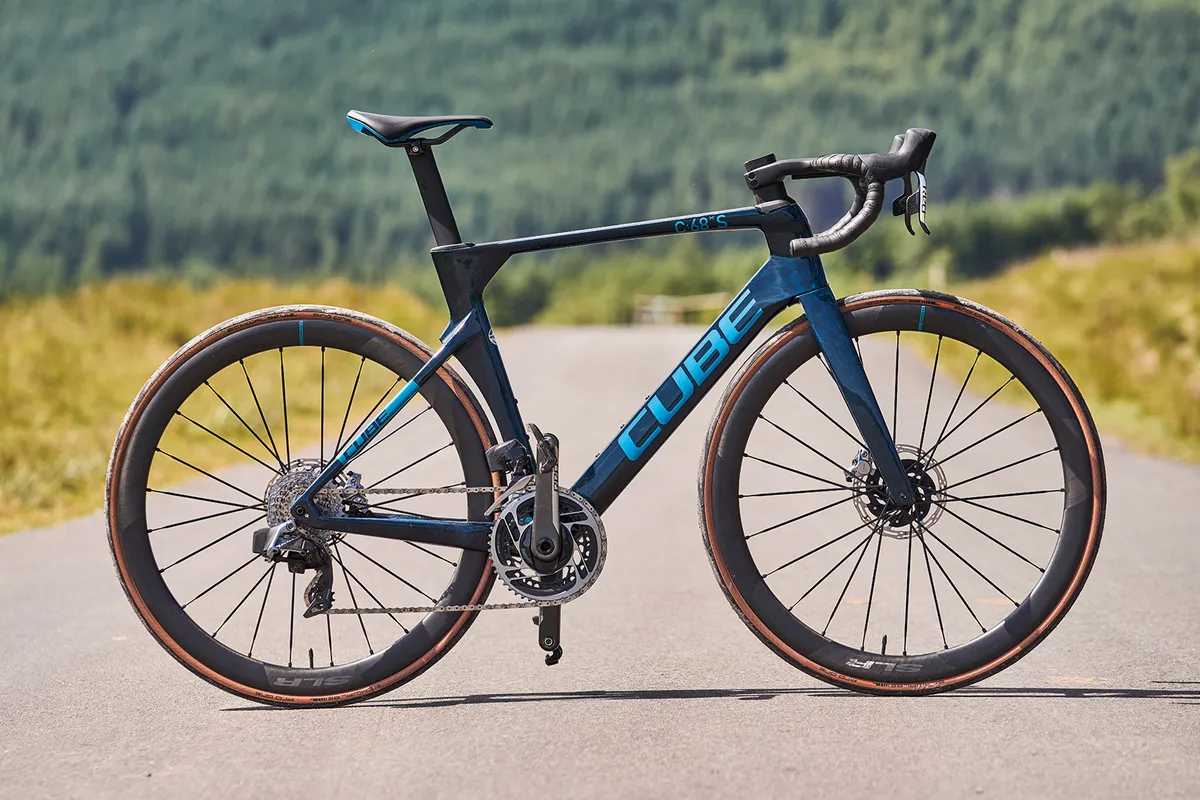
- £8,099 / €6,899 as tested
- Fast with agile handling
- High-spec with quality bespoke components
Cube's Litening range includes this aero-focused frame (renamed the Litening Aero since our test) and the Litening AIR, launched in August 2022 as a slimmed-down, lightweight frame for riders who want an all-rounder with aero touches.
Back to our test bike, and the 7.54kg weight is still impressive for an aero machine, helped by the high-spec SRAM Red eTap build and Mavic Cosmic SLR 45 Disc wheels.
It offers straight-line speed in abundance, making it fast and exciting to ride. A single-piece bar-stem with a low frontal profile helps the bike cut through the wind.
- Read our full Cube Litening SLT C:68X SL review
Factor Ostro VAM
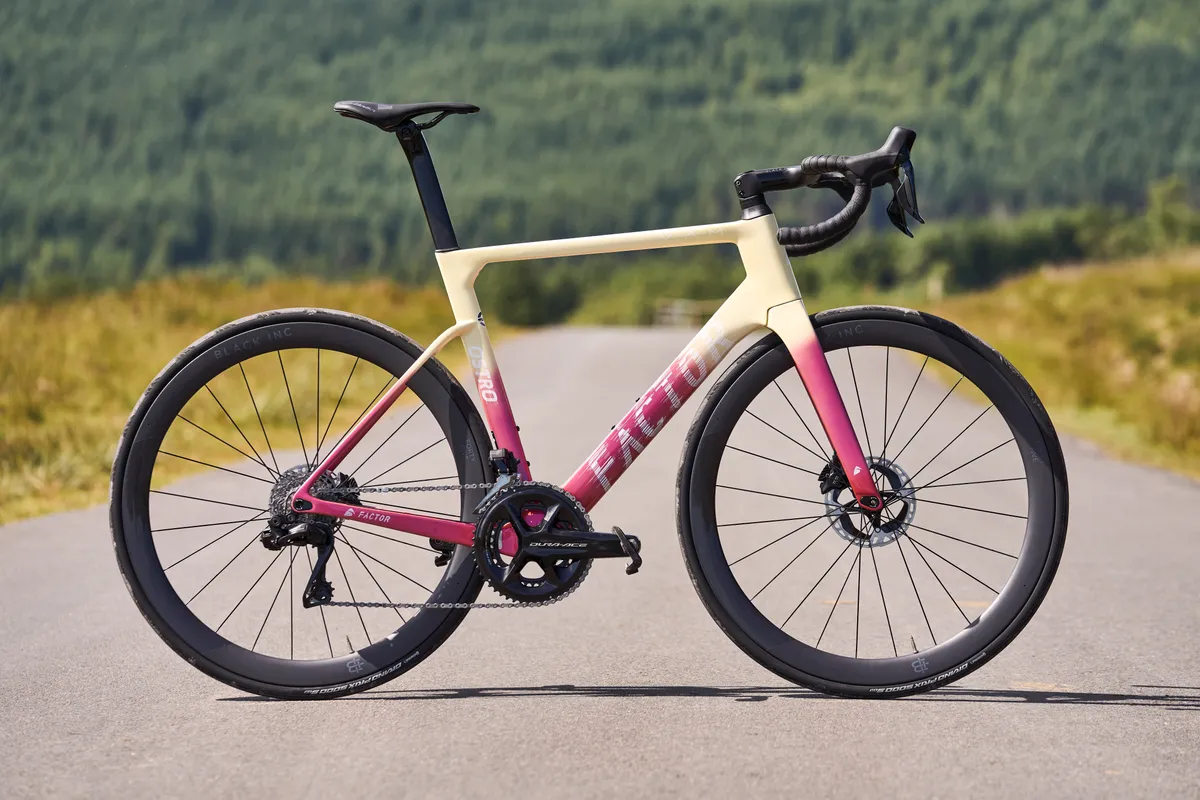
- £9,450 / $11,499 as tested
- Wide tyre clearance and light weight
- Plenty of comfort for broken roads
An all-rounder with an aero edge, rather than a full-on aero bike, the Factor Ostro VAM manages to mix aerodynamics with a 7.4kg weight for the tested size 56 and clearance for 32mm tyres.
There's a proprietary bar-stem from Factor's Black Inc component brand, although you can swap this out for a standard model. The 45mm-deep carbon wheels come from Black Inc as well.
It's a bike that feels composed and confidence-inspiring, with fast steering but predictable handling at speed and enough comfort to handle broken roads.
- Read our full Factor Ostro VAM review
Felt AR Ultegra Di2
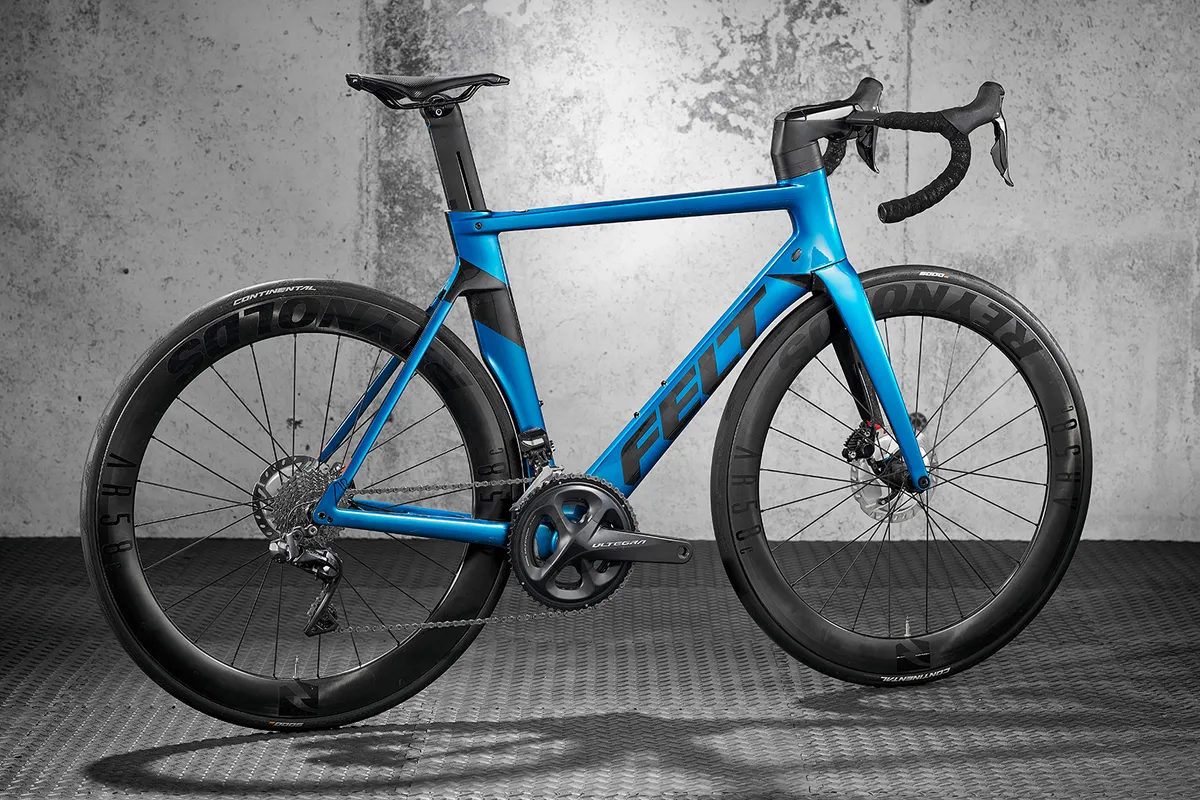
- £6,299 / $6,999 / €6,999 as tested
- Fast, user-friendly and with an excellent spec
- Internal routing limits handlebar-height adjustment
Felt claims the AR Ultegra Di2 is 9.4 per cent more aerodynamic than its predecessor, and there's no denying that out on the road you can feel the aero difference over a more orthodox road bike. It isn't as light as other aero road bikes, but this doesn't get in the way of the Felt being incredibly fun to ride.
When it comes to spec, Felt has done a great job with a near-faultless package including carbon finishing kit, an Ultegra Di2 groupset and Reynolds wheels with Continental GP5000 clincher tyres.
While the internal cabling looks clean and aids aero performance, it leads to some handlebar height-adjustment issues, which is worth bearing in mind.
- Read our full Felt AR Ultegra Di2 review
Giant Propel Advanced Pro 0 AXS
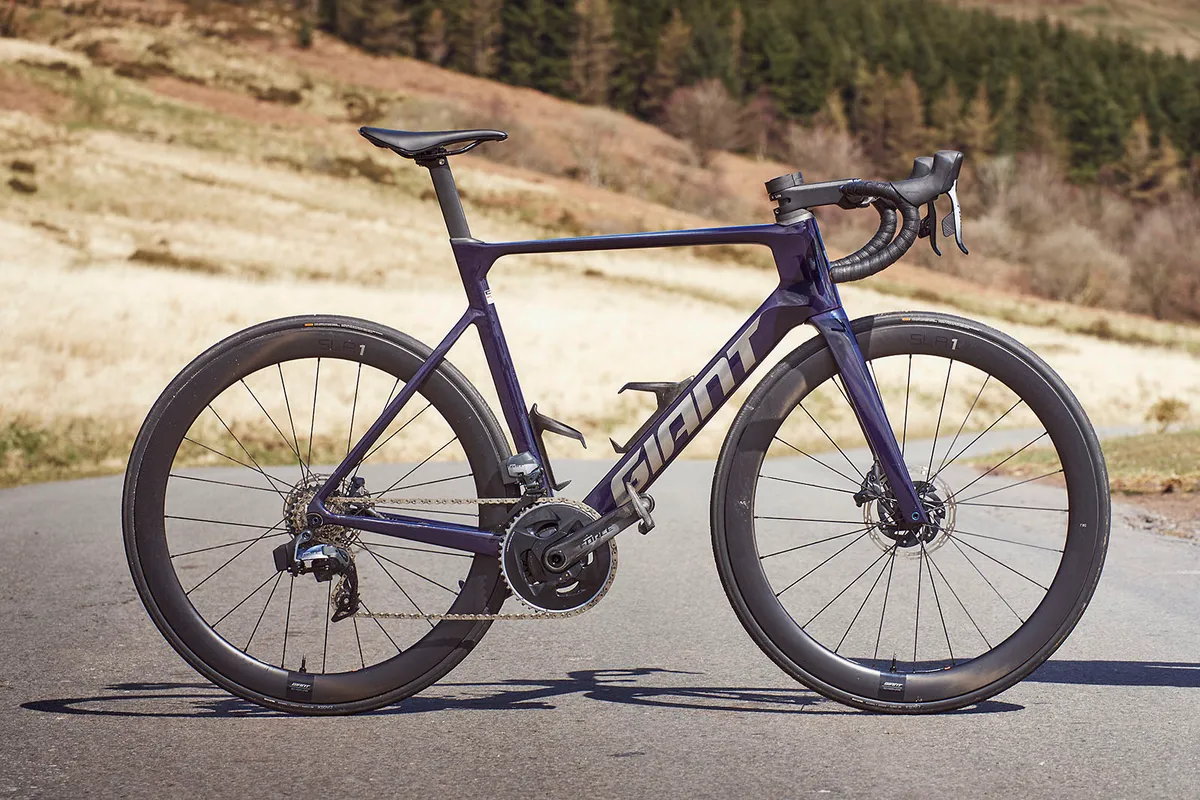
- £6,399/$8,000/€6,900/AU$8,499 as tested
- Blends low weight and aerodynamics
- Assured handling
The Giant Propel Advanced Pro 0 AXS costs half as much as the WorldTour-level Advanced Pro SL and gives away little in terms of performance.
Our aero B ike of the Year 2023 is a brilliantly versatile aero road bike due to its balance of weight, speed and handling.
Not all of Giant's spec choices hit the mark, but the Propel Advanced Pro 0 AXS's mid-range price could leave you with cash for upgrades.
- Read our full Giant Propel Advanced Pro 0 AXS review
Giant Propel Advanced SL 0
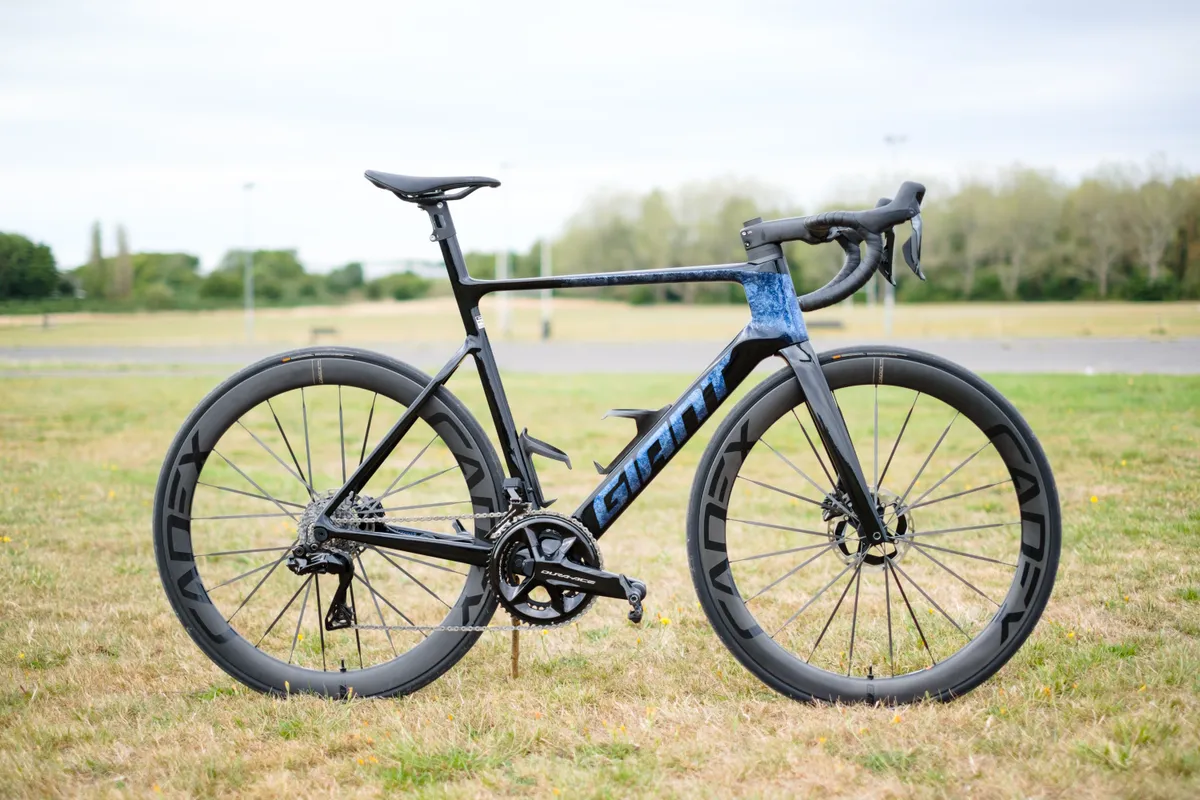
- £11,999 / $12,500 / €12,000 / AU$14,000 as tested
- Very light for an aero bike at 6.9kg
- Easy maintenance and adjustment
At 6.9kg, the Giant Propel Advanced SL 0 is exceptionally lightweight for an aero bike. Giant claims it's also more aero than its predecessor.
It's designed to be easy to work on, although the integrated seatmast means that once cut there's only a few centimetres of saddle-height adjustment.
The bike rolls on 25mm tyres, although there's room for 30mm, but despite this the ride is comfortable. The two-part bar and stem make for adjustability, although Giant doesn't offer bars under 40cm width.
- Read our full Giant Propel Advanced SL 0 review
Lapierre Aircode DRS 8.0
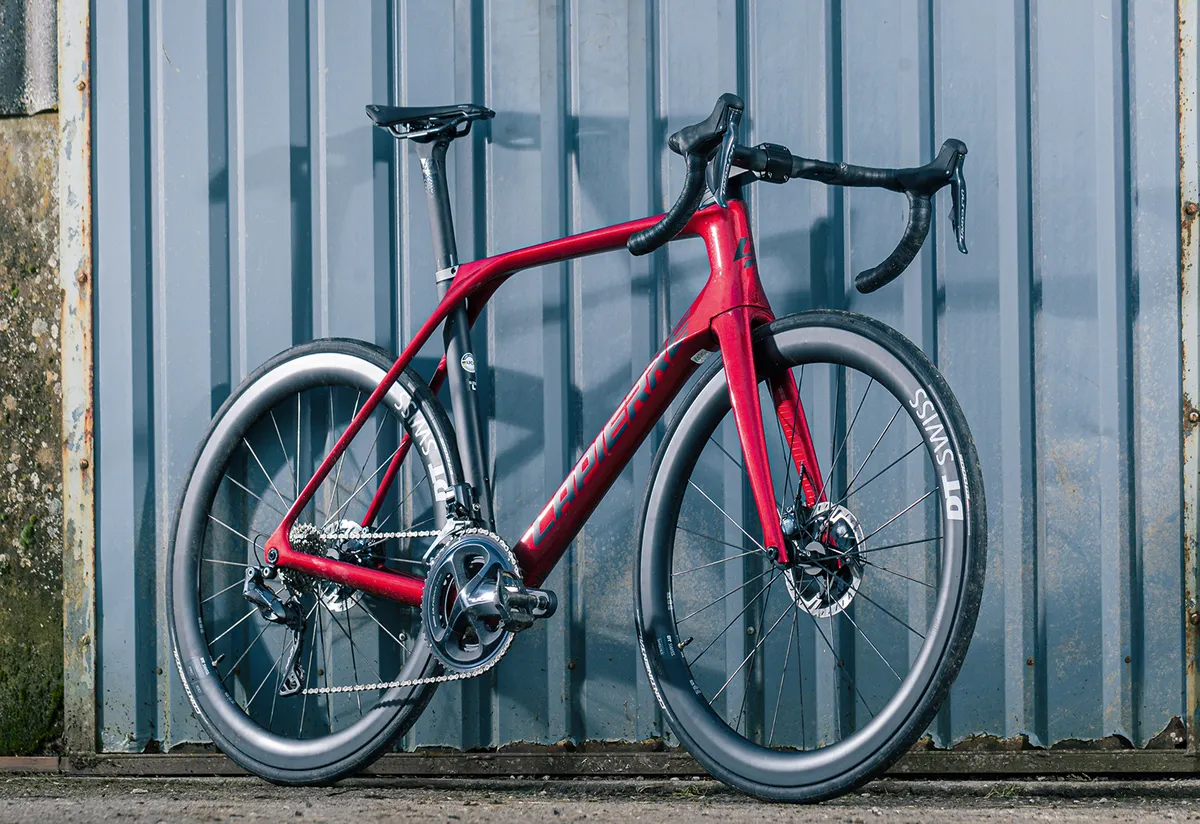
- £6,300 as tested
- Fast with accurate handling
- Superbly equipped
Now in its third generation, the Lapierre Aircode DRS 8.0 follows the trends for aero bikes with the integration of disc brakes and hidden cables – not forgetting clearance for 28mm tyres.
The bike also addresses weight and comfort, two issues that are often associated with aero bikes, with a 900g frame and a carbon layup that's said to improve frame compliance.
Despite the aggressive geometry that screams urgency as soon as you get on the bike, there's no denying it's comfortable to ride. It's a real technical achievement and the spec does it justice with Ultegra Di2 gearing and a DT Swiss wheelset. Lapierre even throws in some bolt-on aero bars for extra versatility and value for money.
- Read our full Lapierre Aircode DRS 8.0 review
Merida Reacto 6000

- £2,800 as tested
- Great value for money
- Excellent frameset but wheels are heavy and tyres are average
The unisex Merida Reacto 6000 is a great-value aero road bike with excellent handling, and a stiff and fast frameset that shares its geometry with the Merida Reacto Team-E .
It puts you in an aggressive position, which makes sense for a bike that is built for speed. This could be tiring on your arms and hands on long rides, but we had no issues during testing.
The spec is good, but there are compromises. It has a cockpit that bucks the trend by sticking with a non-integrated design, which might not be desirable for some, but others will find it very practical.
There is an Ultegra groupset that performs as well as ever, but the wheels are on the heavy side and you would probably want to upgrade the tyres right away.
We've also reviewed the Merida Reacto 4000 , equipped with Shimano 105 and earning the same 4.5-star rating.
- Read our full Merida Reacto 6000 review
Orbea Orca Aero M10iLTD
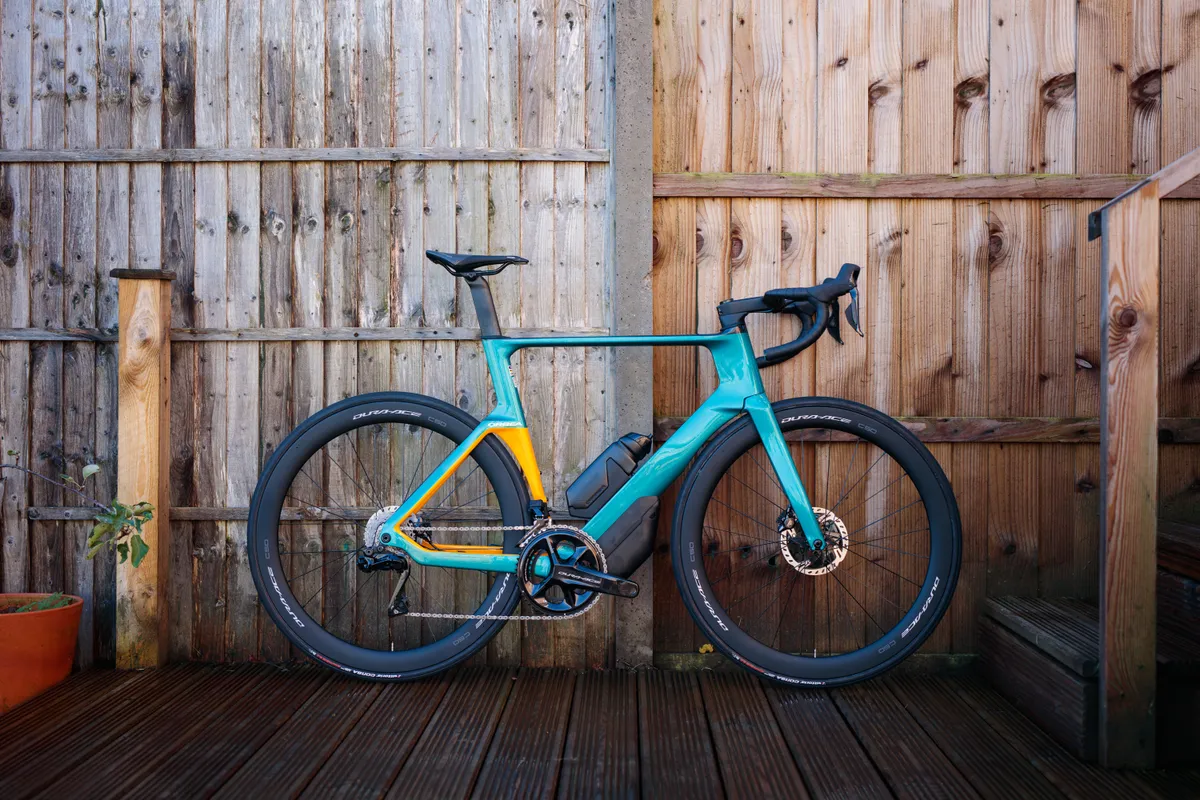
- Fast, comfortable ride
- Clever add-ons for those not racing
- A bit heavier than the competition
Orbea claims the latest iteration of its Orca Aero saves 15 watts over its predecessor. It feels fast, but is still comfortable and adjustable, and the spec leaves no reason for swap-outs. The bike comes with an optional aero bottle and storage under the down tube, the latter not UCI-legal.
There's a nicely integrated bar, although we found the sharp trailing edge hit our wrists when sprinting. The bike is compatible with a standard bar and stem though.
The Orbea is a bit on the heavy side too at 8.3kg, although we didn't notice this when out riding and we were impressed by the Orca's comfort levels.
- Read our full Orbea Orca Aero M10iLTD review
Ribble Ultra SL R Enthusiast
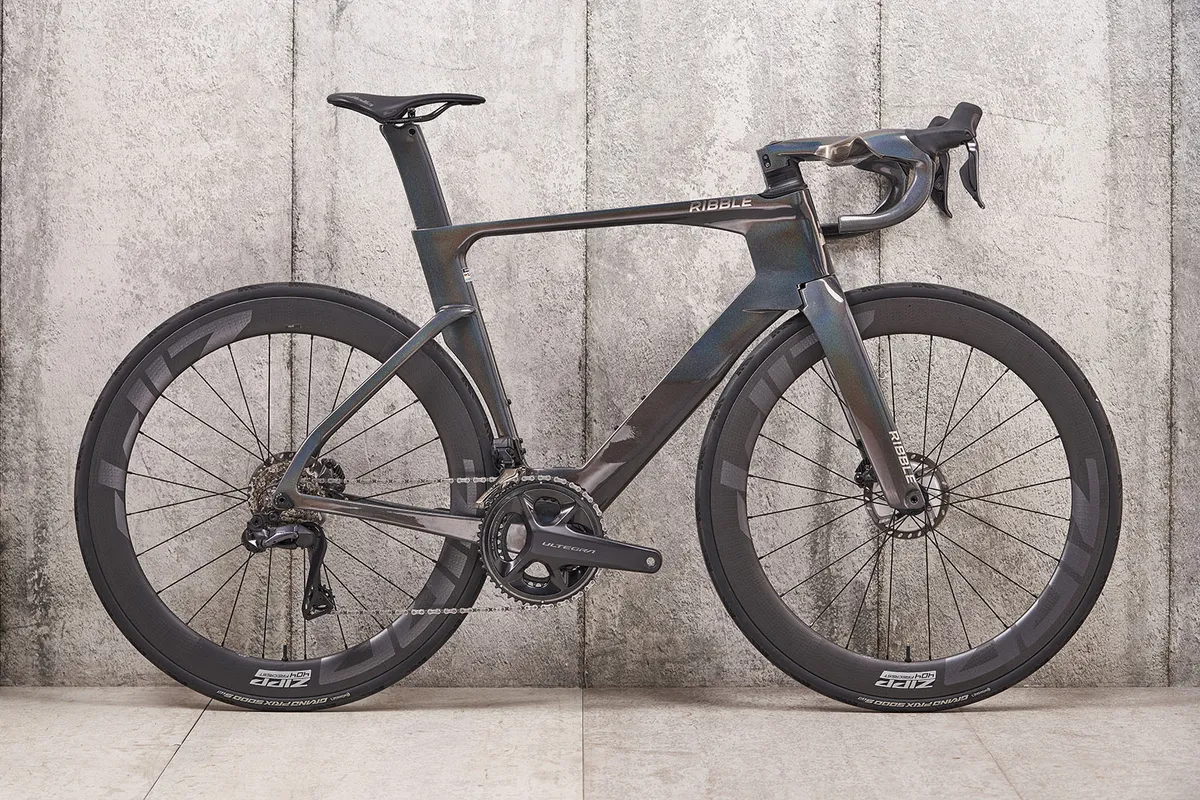
- £6,599 as tested
- Fearsomely fast
- Well priced
The Ribble Ultra SL R Enthusiast's eye-catching aero design translates into visceral speed with minimal concession to overall practicality.
If you just want to ride fast, you'd be hard pressed to find a better aero road bike for the money.
However, an integrated power meter would be nice, as would more handlebar size options and a simpler seatpost clamp.
- Read our full Ribble Ultra SL R Enthusiast review
Vitus ZX-1 EVO CRS Ultegra Di2
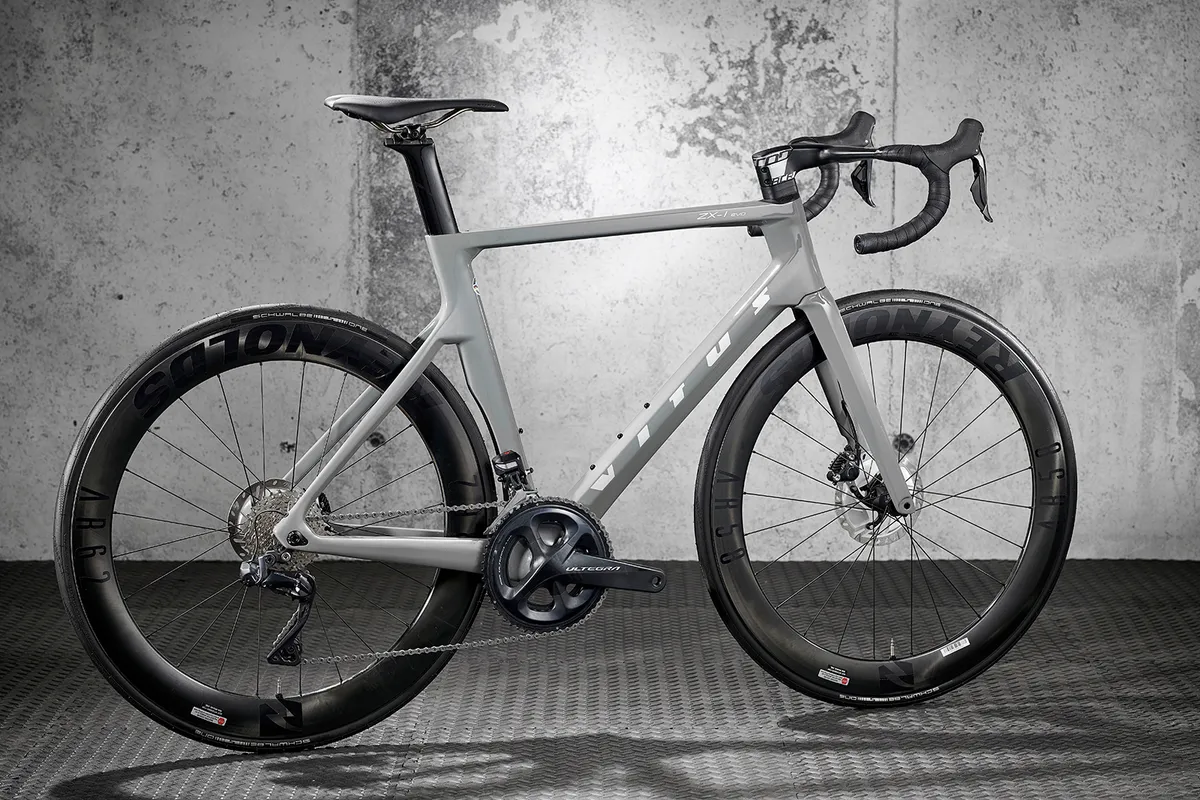
- £3,999 / $5,200 / AU$6,800 / €5,500 as tested
- Incredible-value fast aero bike
- Integrated handlebar rules out front-end fit adjustments
The ZX-1 EVO is Vitus' flagship aero bike, and despite the relatively low price tag, the bike boasts a spec that wouldn't be out of place on a much more expensive ride, with Ultegra Di2, deep-section wheels and aero-profiled finishing kit.
The bike is incredible value for money, then, and it doesn't disappoint on the road either with a joyous ride. The geometry is racy, but it isn't the most aggressive, making this bike a good choice if you value stability.
The only thing to look out for is the integrated cockpit, which doesn't allow for front-end fit adjustments, so it might be wise to try before you buy.
We've also tested the mechanical Shimano 105 spec of the Vitus ZX-1 EVO. Priced at £2,800, it's great value for an aero bike.
- Read our full Vitus ZX-1 EVO CRS Ultegra Di2 review
Cervélo S3 Disc Ultegra

- £3,999 / $5,000 as tested
- Awesome aero experience
- Choppy ride on rough surfaces
Cervélo invented the aero road bike, and the S3 Disc builds on the brand’s 25 years of aero knowledge with a claimed 13 watts less drag and a 68g weight saving on its predecessor. Cables all run internally, despite the S3 having a separate bar and stem for adjustability.
The wheelbase is short even on larger-sized frames, leading to sharp handling, although the bike would benefit from an upgrade from the alloy DT Swiss P1800 wheels. Run tubed, they lead to a rather choppy ride over uneven road surfaces; a swap to 28mm tyres might help.
- Read our full Cervélo S3 Disc Ultegra review
Orro Venturi Evo 105

- £2,100/ $2,667 / €2,457 as tested
- Tunable spec
- Reasonable price
- Some flex in the front end
At £2,100, the Orro Venturi Evo is a British aero bike that won’t break the bank. It looks great too, with space for 28mm tyres and an aggressive racing position. We reckon it rolls with the best on flatter undulating roads, although there’s a little front-end flex when pushed hard.
You can custom-tune the spec to your requirements, and alongside a Shimano 105 R7000 groupset , the test bike came with Vision Team 30 aero alloy wheels and fast-rolling Continental tyres. It’s a nice package at a nice price.
- Read our full Orro Venturi Evo 105 review
Scott Foil RC Pro (2023)

- £10,499 / $10,999 / €10,499 as tested
- More aero than the previous Foil
- Plenty of comfort, particularly at the rear
The latest Scott Foil has a claimed increase of 16 watts in its aero efficiency at 40kph over its long-running predecessor, thanks to wind tunnel tuning with Simon Smart, the man who's also behind the ENVE SES wheel range . At 7.4kg, the new Foil is light too, despite having deeper aero sections than the previous bike.
The frame geometry is the same as the Scott Addict RC , offering sharp, predictable handling at high speeds, but not at the expense of comfort, particularly at the saddle. That's thanks to a three-piece seatpost design with a rubber insert and a wider 28mm rear tyre.
It's a bike that's fast, lightweight and comfortable.
- Read our full Scott Foil RC Pro review
Tifosi Auriga Chorus Disc
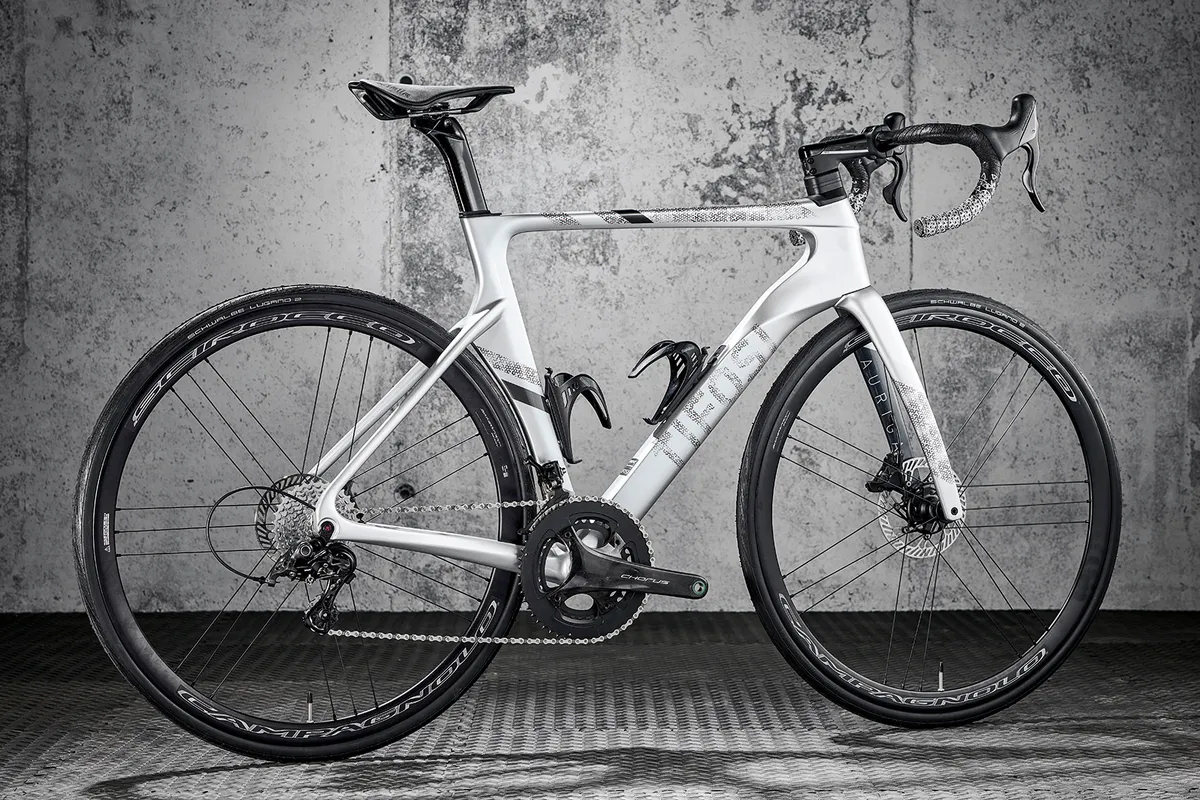
- £3,499 as tested
- Long and low ride position
- Better tyre rubber would up the Auriga's game
The Tifosi Auriga is a fast bike in a straight line, with a stiff frame, and it handles direction changes with admirable agility. Despite its 9kg-plus weight, it climbs well too.
The Auriga frame's geometry puts you in a long and low position, which should cut down your frontal profile for aero benefits, while the FSA ACR system allows cables and hoses to be run internally, also lowering drag.
Tifosi claims 28mm tyre clearance, but we think there's room for more and the Auriga is equipped with a Campagnolo Chorus mechanical/hydraulic groupset, which we enjoyed. The tyres are in need of a swap-out though.
- Read our full Tifosi Auriga Chorus Disc review
Trek Madone SLR 9 eTap (2023)
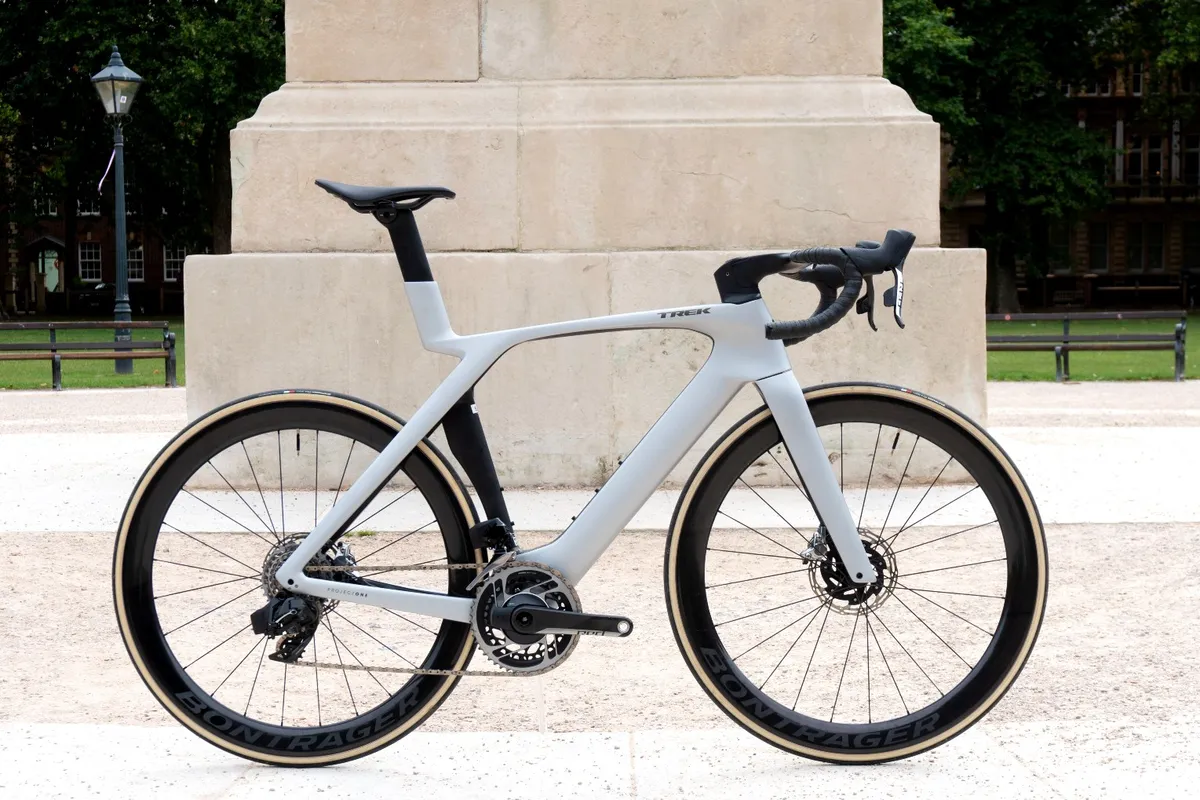
- £13,800 / $13,199 / €14,999/ AU$17,999 as tested
- Very fast, very expensive
- Slightly twitchy in crosswinds
With distinctive, aggressive looks, the latest Trek Madone SLR is every inch the aero race bike.
The distinctive IsoFlow seat tube is designed to funnel airflow into the area behind the rider, improving aerodynamics while retaining some of the comfort from the old IsoSpeed system.
The rigid frame and sharp handling make for fast riding that's predictable, in most circumstances, and inspires confidence. We did find the Madone somewhat sensitive to crosswinds though, probably down to the slightly angular Bontrager Aeolus RSL 51 wheel rims. The fitted 25mm tyres felt a little narrow too, and they're not tubeless.
- Read our full Trek Madone SLR 9 eTap review
Wilier Triestina Cento10 SL Ultegra Di2
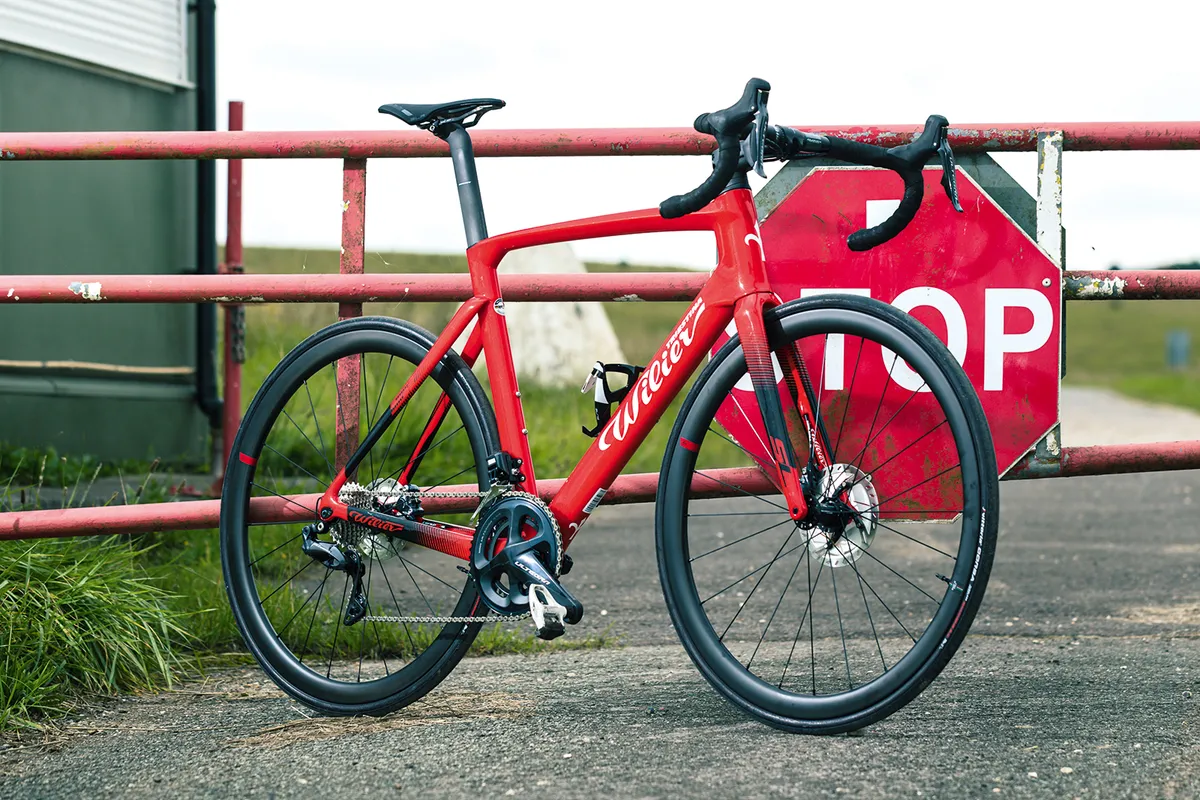
- £5,540 / €5,600 as tested
- Sharp handling
- Firmer ride than some
The Cento10 SL is a lower-priced version of Wilier's previous flagship road bike, the Cento10 Pro (the Filante is now its top aero racer).
The SL shares much in common with the Pro, using the same moulds for the frame, and it feels like a masterstroke because the bike is almost indistinguishable from a superbike, at a much more affordable cost.
The bike is firmer than some, but it's a dream to ride with a long and low position that feels balanced when cornering fast, and handling that puts other aero bikes to shame.
The equipment spec is high, too, with Shimano Ultegra Di2, Wilier's own carbon wheels and a Selle Italia SLR Boost Carbonio saddle, but the 25mm tyres might be on the slim side for some.
- Read our Wilier Triestina Cento10 SL Ultegra Di2 first ride review
Buyer’s guide to aero road bikes: what to look for
What is an aero bike.
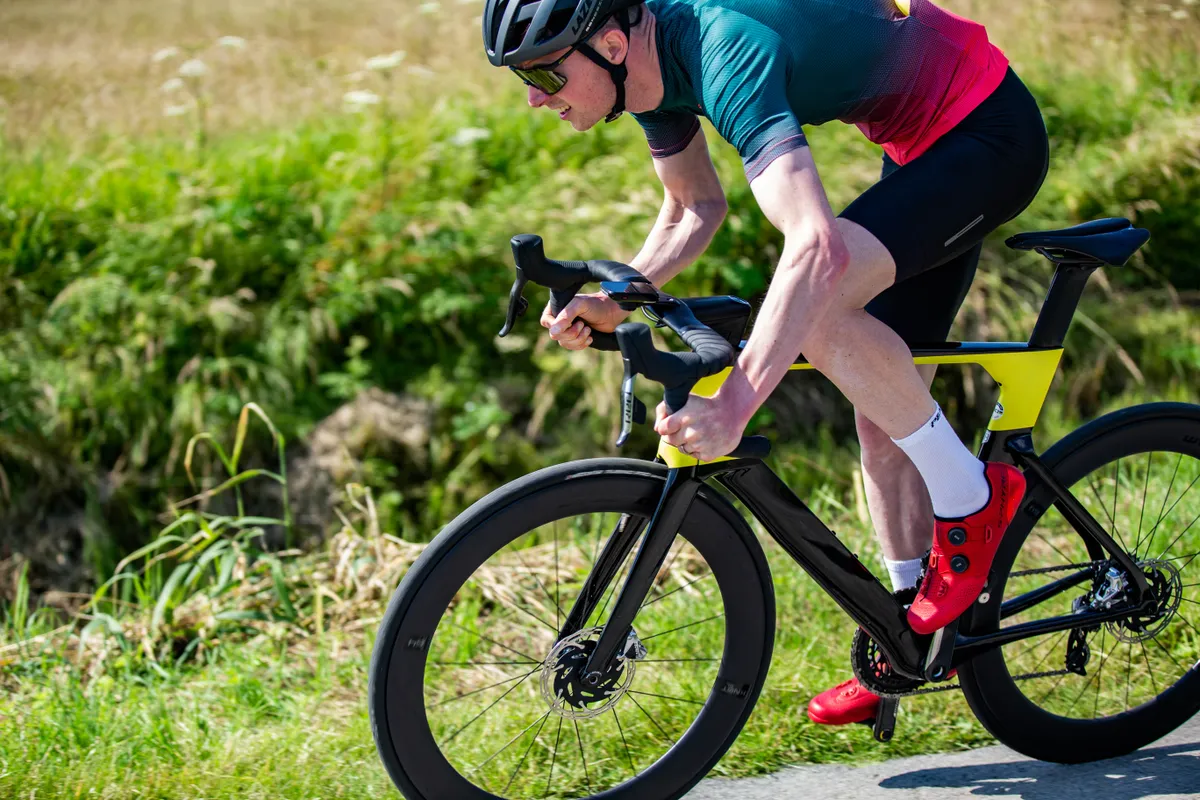
An aero bike prioritises aerodynamic features, aiming to give you a little free speed as you ride.
That starts with aero tube profiles, usually a truncated aerofoil design (also known as a Kammtail), with a smoothly curving leading edge and an abruptly chopped-off rear. The idea is to trick the wind into following the drag-saving shape of a full aerofoil while saving weight and maintaining frame stiffness.
Truncated shapes are particularly evident on the down tube and seat tube, but on dedicated aero bikes usually carry over to the head tube, fork blades, seatpost and the rest of the frame.
The latest aero bikes are all about integration and it’s rare to see exposed cables at the front end of the bike. The trick for bike manufacturers is providing that integration without sacrificing fit or everyday usability – some brands do this better than others.
Aero bikes will sometimes have more aggressive road bike geometry than all-round race bikes – and certainly more aggressive than endurance road bikes or sportive bikes. That normally means a longer, lower position that allows the rider to hunker down over the bar, reducing frontal profile for less wind resistance.
An aero bike arguably needs deep-section aero wheels to complete the deal. The best will come with them, but some makers fit more basic wheelsets (usually to keep the price down), expecting you to buy your own.
Aero bike vs road bike
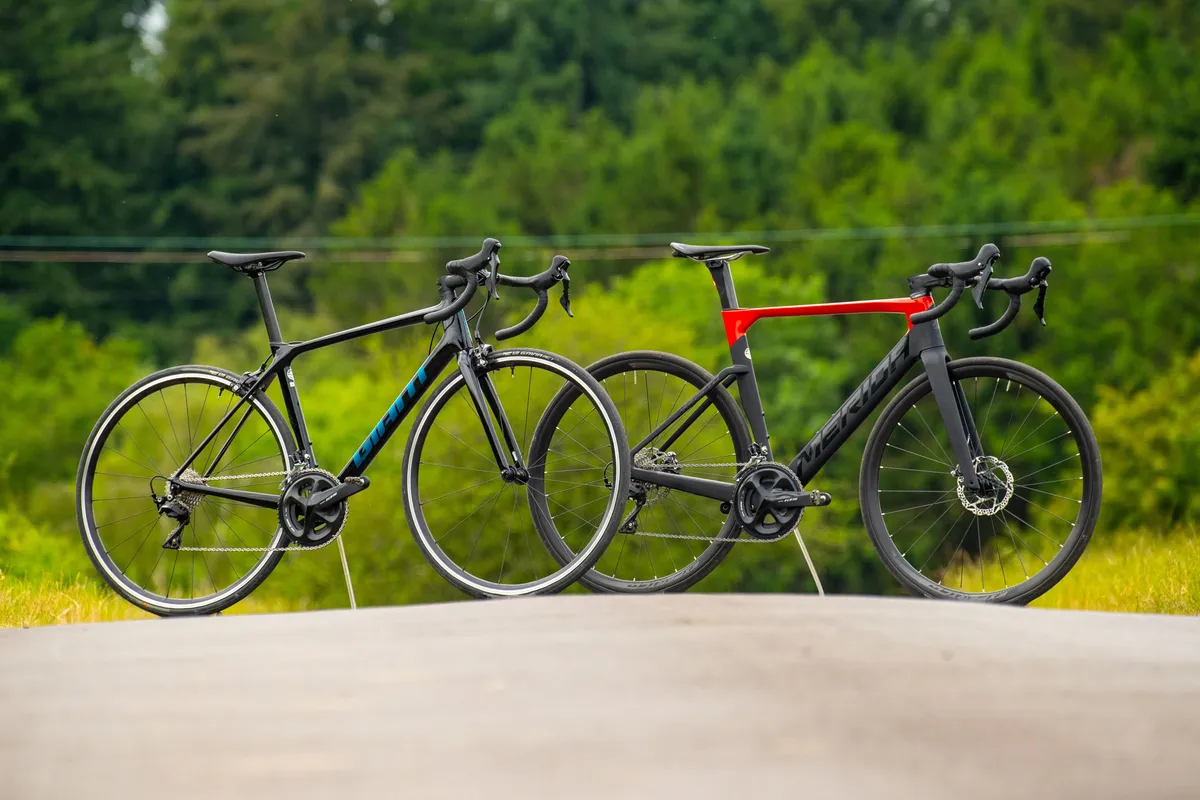
It looks as if the era of the specialist aero bike may be passing. As we’ve already mentioned, the latest generation of lightweight/all-rounder race bikes increasingly incorporates aero features.
Take the Specialized Tarmac SL7 road bike, for example. It’s almost as aero as the brand’s Venge specialist aero bike, which has now been removed from the range with Specialized adopting a ‘One bike to rule them all’ philosophy.
Other formerly conventional road bikes that have had an aero makeover include the Cannondale SuperSix (overall winner of our Bike of the Year test in 2020), the Trek Emonda and the Scott Addict , with all these brands promoting aero benefits in a lightweight package.
As with any bike purchase, it’s a case of weighing up the options and choosing the right machine for your needs. If you’re looking for more of an all-rounder with an aero edge, there are now plenty of options out there. Equally, if all-out speed is your thing, a dedicated aero bike will have that ace up its sleeve.
What is the fastest aero bike?
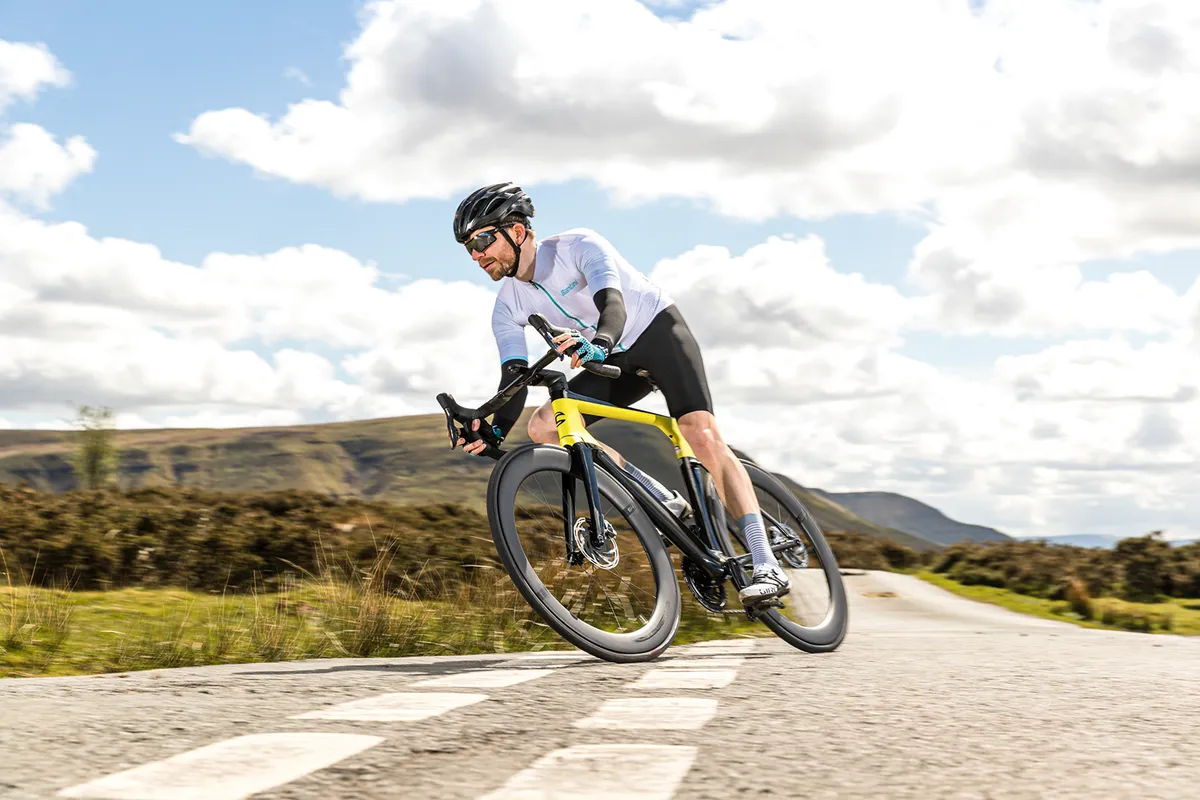
Almost every aero bike will be accompanied by some kind of claim about how the bike is faster than its predecessor or competitors. Aero gains are often quoted as seconds saved over 40km at 45kph or such, but do you regularly ride at that speed? The laws of physics mean that if your average speed is half that, you’ll reap an eighth of that figure.
With around 80 per cent of wind resistance down to you, rather than the bike, there is only so much help an aero bike can provide. That’s before we get to the rider’s engine, too. If speed is your thing, here are five ways you can ride faster for free .
Having said that, few riding experiences beat the feeling of free speed when riding fast on a sharp-handling aero bike, especially on a rapid downhill or full-gas on a flat or rolling road.
As for the ‘fastest’ aero bike, as ever we’d tread with caution when it comes to manufacturer claims. Sure, you can factor it into your buying decision, but there’s lots more to consider besides, including fit, usability, frame features (for example, tyre clearance) and budget.
Tube shapes
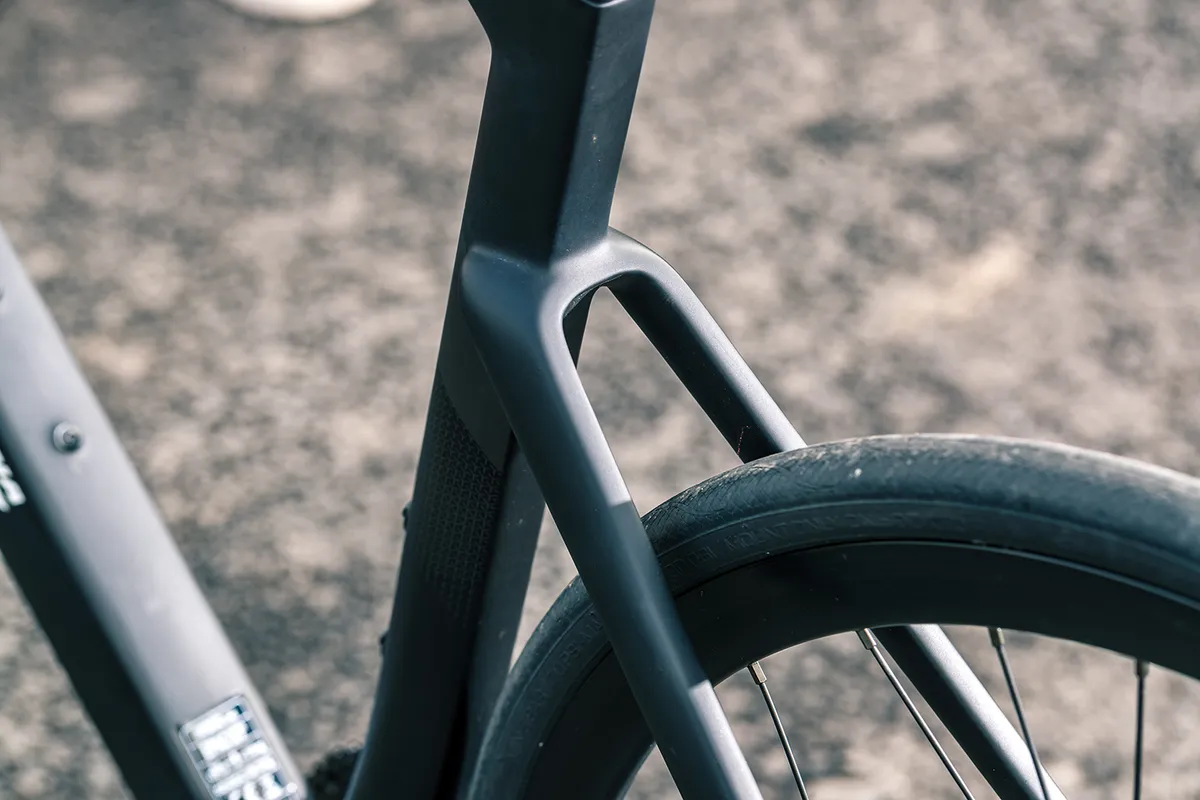
It goes without saying that an aero bike will have aero tube profiles. These are most obvious on the main tubes of the bike, the down tube and the seat tube in particular.
Aero features will likely extend to the seatstays, which are often dropped, hitting the seat tube some way down from its top, as well as being aero in profile. The head tube, fork and seatpost (and its clamp) are also likely to have had the aero treatment.
The first crop of aero road bikes, led by the Cervélo Soloist (which has now made a comeback in 2022), had teardrop-shaped tubes. It’s the classic aerodynamic shape, but the tail adds a lot of weight without much structural benefit, so the frames tended to be heavy. The extended profile could also make for tricky handling in crosswinds.
That’s changed now, with the realisation that a truncated aerofoil (or Kammtail) can be more aerodynamically efficient than a teardrop.
Air forms an eddy behind the cut-off edge of the tube and air flowing past this forms a teardrop shape that’s much longer than the tube. Trek says that although the length of its Kammtail tubing is less than three times its width, it behaves aerodynamically as if it’s eight times the width.
With that in mind, there’s potentially a quadruple benefit from truncated aerofoils: they use less material for a lighter frame, they are more structurally rigid, they produce longer virtual tails to the tubes and they’re less edgy in crosswinds.
Another plus: they make it much easier for manufacturers to produce aero designs that comply with the geometry rules set by the UCI, cycling’s world governing body.
Integration

The new frontier in aero bike design is front-end integration. That means the handlebar and stem are often one piece, with a broad, flat aero shape to the bar. At least some of the brake and gear cables will run internally into the frame, so they’re out of the airflow.
There’s a surprising amount of drag from round cables routed externally. Pinarello claimed burying the cables inside the bar and stem of the Dogma F12 improved aerodynamics by more than 5 per cent relative to its F10 predecessor, which had external cabling (Pinarello has since launched the new Dogma F ).
The flip side is that some integrated systems can be difficult to work with, so expect to spend more on maintenance or to deal with more frustration if doing it yourself.
Also, make sure you’re comfortable with the position dictated by a bike’s integrated carbon bar/stem. There are limited size options and adjustability to many integrated systems.
The best integrated cockpits keep everything clean and tidy, hiding the cables from the wind, but still allow for easy servicing and fit adjustments, most likely by keeping the handlebar and stem as two separate units.
Ride quality
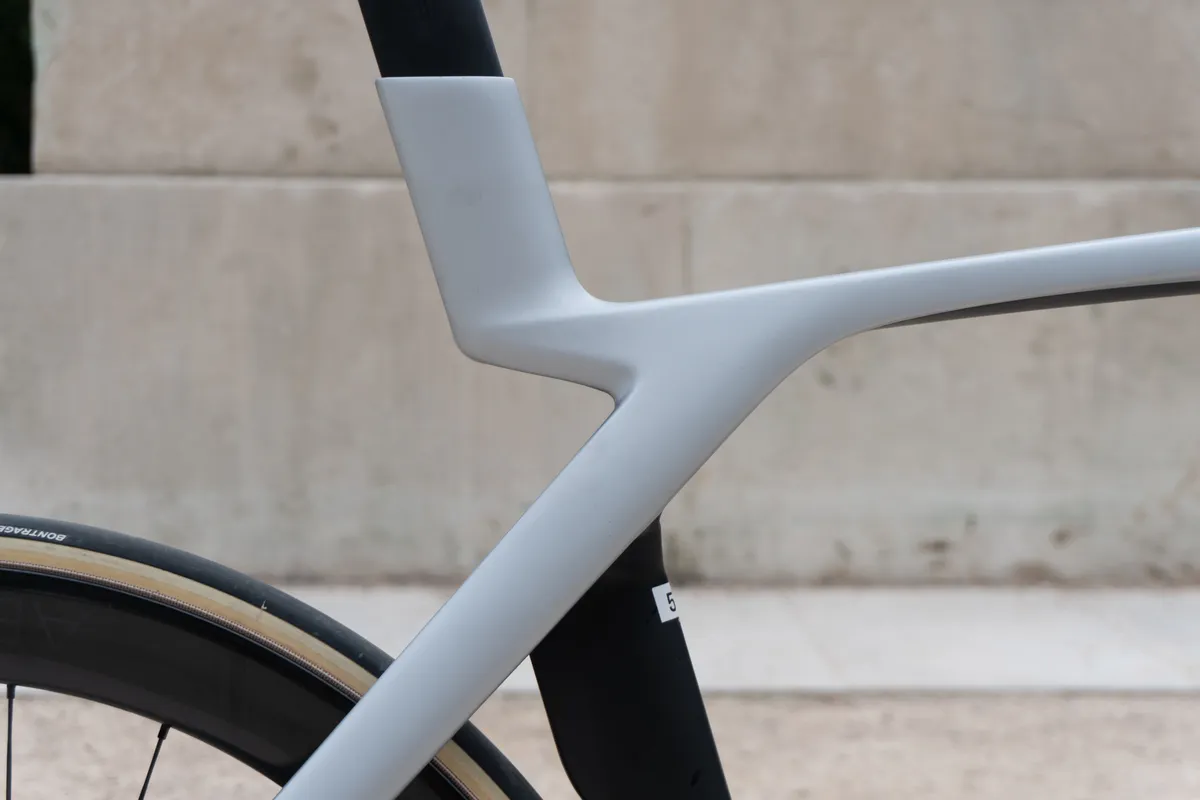
With their chunky tube profiles, aero bikes of old had a (often justified) reputation for a harsh ride.
That’s largely changed with the modern crop of aero bikes, because brands have learned how to design frames for a more comfortable ride without compromising aerodynamics, and road disc brakes have increased tyre clearances – you can now run a 28mm or even 30mm tyre on many of the latest aero bikes.
Nevertheless, it’s something to look out for if you’re thinking of buying an aero bike. It’s worth reading road bike reviews and, ideally, taking a test ride before parting with your cash, especially if you live somewhere with rough roads.
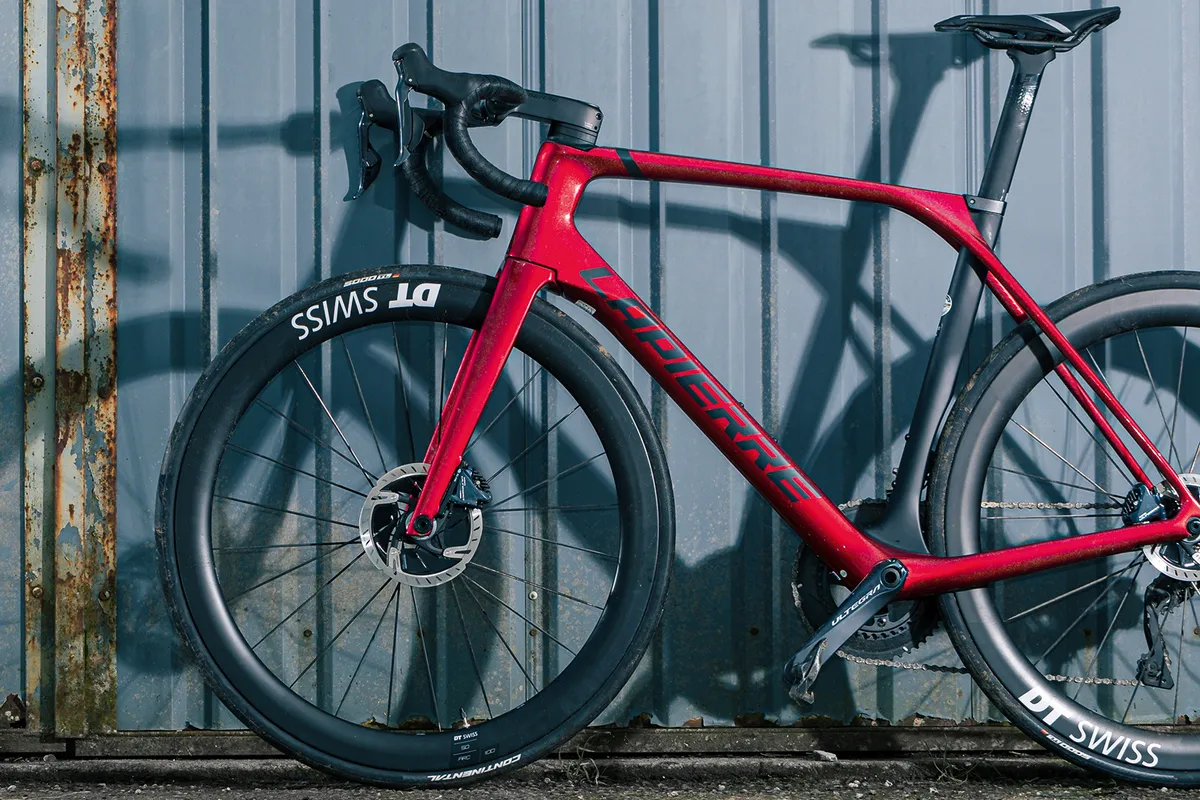
As mentioned above, an aero bike will typically promote a long, low ride position. That’s great for cutting through the wind, but make sure you’ll be comfortable riding an aero bike (or that it offers the adjustability you need) before taking the plunge. Neck, back, shoulder and hand pain can be issues if you’re not very flexible or not used to an aggressive position.
You may adapt to the position, but if you’re not racing you don’t want to end up suffering on your bike to go a little faster – being forced to cut your ride short due to pain or picking up an injury is counter-productive, to say the least.

Weight used to be a driving factor behind bike design, with a lower weight perceived to result in a faster and better ride. Aero bikes disprove the rule, with many tipping the scale at around 8kg and feeling lightning-quick.
While a lightweight bike might serve you better on long climbs, the weight and performance difference between many more conventional bikes and aero bikes is marginal, and improving your power-to-weight ratio can be one way to offset the difference.
There are also ways to make your road bike lighter if you’re that way inclined.
A lightweight bike might feel more responsive, but geometry and tyre choice arguably have as much impact on the feel of a bike as weight. If you want something that feels responsive and snappy, look for a bike with a short wheelbase and a head tube angle of around 73.5 degrees.
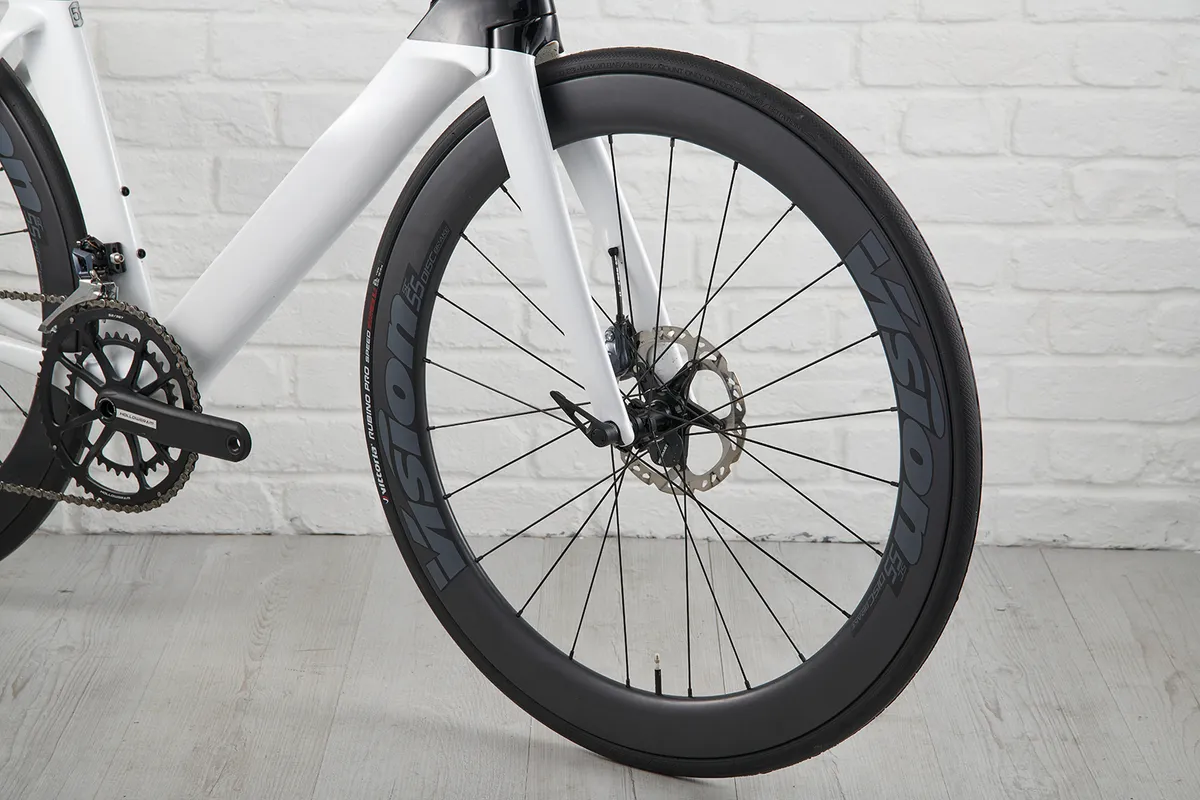
An aero bike needs an aero wheelset to complement – and make the most of – the frame’s aerodynamics. It’s still all too common to find an aero frameset equipped with budget, non-aero wheels. Recognising this, some brands are now fitting wheels worthy of the investment they’ve made in their frames.
Unless you’ve got a set of go-fast wheels already sitting at home, it’s worth looking for a bike that comes with decent deep-section wheels. If not, and you do want to upgrade, budget the best part of £1,000 for a set of the best road bike wheels .
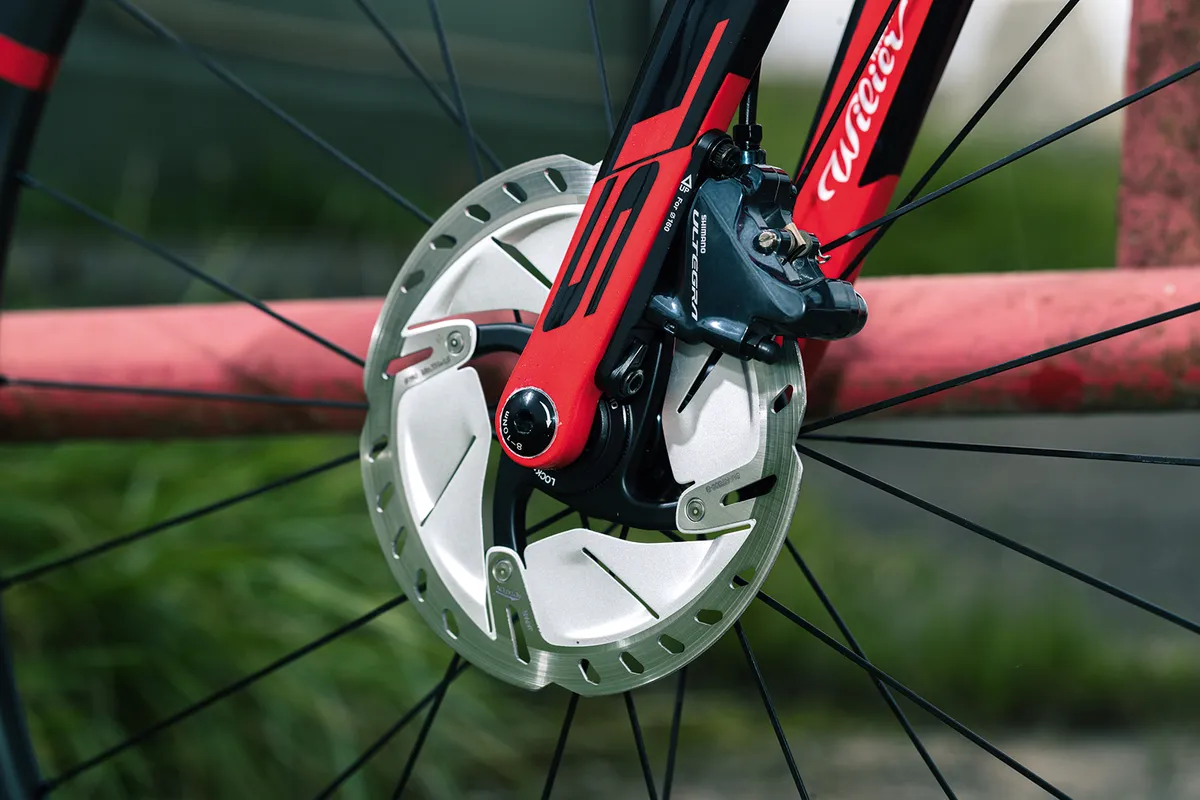
Disc brakes have largely taken over on all new bikes, but rim-brake outliers are still out there, particularly if you’re buying a second-hand bike .
If you go for a rim-brake aero bike (and, most likely, an older model), you may find the calipers have been moved out of the wind. The front brake may be integrated into the fork and the rear brake may be under the bottom bracket.
Fortunately, this is less common nowadays and, as a general rule, we’d steer riders away from integrated brakes. Integrated front brakes are often less effective than a separate caliper, and rear brakes under the bottom bracket are prone to brake rub and getting covered in filth.
Most high-end aero bikes now come with disc brakes, but it’s worth bearing in mind if you’re looking at a lower-priced rim-brake model.
Share this article

- Terms & Conditions
- Subscribe to our magazines
- Manage preferences
Canyon Aeroroad v Trek Madone Speed
anthonyjessup said: Concerned though it is cheaper because the components aren't as good as the Trek?
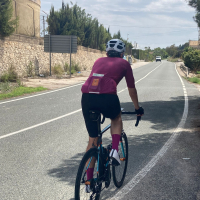
philbar72 said: van der poels ad on zwift, shows a new aeroad. it will still undercut the madone by a way and be as good a bike as it ( as well as being lighter on the climbs). I see far more aeroads out on the roads, and as others say if you want to go fast in an ironman go for a TT rig and then get a cheaper road bike. (maybe an aeroad SL rather than Slx)?
- All Categories
- 18.2K BikeRadar team
- 184.1K Road cycling forum
- 137.2K Mountain biking forum
- 28.1K Commuter cycling forum
- 1.3K Family & kids cycling forum
- 2.9K Stolen & found bikes
- 9.5K Buy & sell
Site footer

- Facebook White
- Terms & conditions
- Privacy policy
- Cookies policy
- Manage Privacy Settings


IMAGES
VIDEO
COMMENTS
The Canyon Aeroad is an aero bike designed for pure speed. This is seen from the new cockpit design, which is very clean with hidden cables and steeped with innovative thinking. The Aeroad is Canyon's flagship bike, ridden by Matthew van der Poel to stage wins at the Tour de France.
The Trek Madone SL 6 Gen 8 and Canyon Aeroad CF SLX 7 Di2 are both carbon frame aero bikes with hydraulic disc brakes. The Madone SL 6 Gen 8 has better components, while the Aeroad CF SLX 7 Di2 has higher gearing.
A bike with lower gearing will be easier to ride up steep hills, while a higher top end means it will pedal faster down hills. Lowest gear. (climbing) 41 mph. 2023 Aeroad CF SL 8. 39 mph. 2023 Madone SL 6 Di2. 39 mph. 2024 Madone SL 6 Gen 7.
The latest Trek Madone SLR Gen 7 bike takes a totally different tack to most aero bikes, with a seat tube that splits towards its top, leaving a large hole under the rider. Trek claims that this ...
The main difference between Madone vs Aeroad is that the Madone is designed for riders who want an all-round performance, while the Aeroad is designed for riders who want a race-oriented bike. Both bikes are great options for anyone looking for a high-performance road bike, but if you're looking to get the most out of your riding experience ...
Read more: Canyon Aeroad CF SLX 8 full review. BMC Time Machine 01 Road Four. 7. BMC Timemachine 01 Road ... Top end models like a high spec Trek Madone will cost over £10,000 / $10,000 (Image ...
Riders Also Compared. The Canyon Aeroad CF SL 7 Disc, Trek Madone SL 6, and Trek Madone SL 7 are all carbon frame aero bikes with hydraulic disc brakes. The Aeroad CF SL 7 Disc has 650c / 700c carbon wheels and higher gearing, the Madone SL 6 has aluminum 700c aluminum wheels and better components, and the Madone SL 7 has 700c carbon wheels.
The best aero road bikes in 2024 | 20 top-rated bikes & buyer's guide.
#cyclinginsider #trekmadone #canyonaeroadHello friends!In this episode, I bring you the buyer's guide for the 2024 Trek Madone SL7 Gen 7 aero road bike.And...
Canyon Aeroad or Trek Madone. Just want to get some inputs on choosing between the Canyon Aeroad SL Disc 8.0 Di2 and Trek Madone SLR 6 2021. Suppose that I can get these two at the same exact price - considering spec, comfort and overall experience, which one should I go for. I won't be racing, just riding for fun and recreational training.
I can't decide between the Canyon Aeroad CF SL 8.0 and the Trek Madone SL6 (2019 rim). Both come with Ultegra group set and both have rim brakes. As you may known, the Aeroad ($3.6K+Shipping) is few hundred bucks cheaper than Madone ($4k+tax). I have test ridden the Madone, its smooth, fast, and most important, very comfortable.
Hoping you might be able to provide your input on which would be a better buy. Price wise, i'm okay with both, despite the Madone being 1000 euro more expensive (I actually can't figure out why Madone is1000 euro more expensive, as the Aroad seems to include an integrated powermeter, which the Madone doesn't have). Trek has superb warranty, you ...
WHEre to buy this bike:https://www.bandjbicycle.com/https://www.winspace.ccCARBON WINSPACE WHEELS $1200!!USE MY DISCOUNT CODE FOR 10% OFF TOTAL PURCHASEUse a...
The Canyon Aeroad CF SL 8 Disc, Trek Madone SL 6, and Trek Madone SLR 7 eTap are all carbon frame aero bikes with hydraulic disc brakes. The Aeroad CF SL 8 Disc has 650c / 700c carbon wheels, the Madone SL 6 has aluminum 700c aluminum wheels, and the Madone SLR 7 eTap has 700c carbon wheels and a 2 × 12 drivetrain providing a wider range of gears.
On this Youtube Cycling Vlog I take on a Patreon for the second time on KOM Hunt tv in a bike race. This time it's my Canyon Aeroad vs their Trek Madone so w...
The Canyon Aeroad CF SL 8 Disc and Trek Madone SL 6 are both carbon frame aero bikes with high-end components and hydraulic disc brakes. The Aeroad CF SL 8 Disc has carbon 650c / 700c carbon wheels and higher gearing, while the Madone SL 6 has aluminum 700c aluminum wheels. ... Specs; Overview Bike Comparison. Custom Bike Remove All Save. Only ...
Hi, I'm shopping for a new aerodynamic bike for half and full Ironman races. There are two models in particular that I'm considering, the Trek Madone SL6 Gen 7 and the Canyon Aeroad CF SLX 7 Di2. Both bikes come with the Shimano 105 R7170 Di2, but the Canyon comes with a powermeter, which the Trek doesn't have. And the Trek is $1000 more expensive.
Trek have released the Trek Madone SLR Speed (no-one has reviewed it yet) which includes the bars but then there is also the Canyon Aeroad CF SL Disc 8.0, which is Di2 and I can add tri bars (plus its £1500 cheaper). Concerned though it is cheaper because the components aren't as good as the Trek? I don't want to be updating the bike anytime soon!
The Canyon Aeroad CF SLX 8 Disc Di2 and Trek Madone SLR 9 Gen 6 are both carbon frame aero bikes with hydraulic disc brakes. The Madone SLR 9 Gen 6 has better components. ... Size: 47, Trek Madone adjustable aero VR-CF, OCLV Carbon, invisible cable routing, 93mm reach, 123mm drop, 38cm width; Size: 50, 52, Trek Madone adjustable aero VR-CF ...
Thanks y'all for that! But now I'm faced with another dilemma…. With the Aeroad out of stock priced at 6899 AUD, and the Madone on sale at 6999 AUD, however without the shipping costs and direct to consumer issues of Canyon, I'm at crossroads. Both come with 105 Di2 and are at a similar weight. Aesthetically, they are equally attractive ...
The Canyon Aeroad CF SL 8 Disc, Trek Madone SL 7, and Trek Madone SLR 9 are all carbon frame aero bikes with hydraulic disc brakes. The Aeroad CF SL 8 Disc has 650c / 700c carbon wheels, while the Madone SLR 9 has better components. Similar Bikes. Accessories. Ride Feel. Based on frame geometry and build specs.
Looking to buy a new bicycle, I'm stuck between 2020 Madone sl6 (lightly used) or a brand new canyon aeroad sl7. Main advantages (in my opinion) with…
If lightweight then canyon ultimate vs. emonda. If aero aeroad vs domane and what ever Giant models apply. The emonda weighs more than the canyon Aeroad though, so it's not that simple. Tarmac SL7 is the fastest bike out there with the Aeroad up there as well.